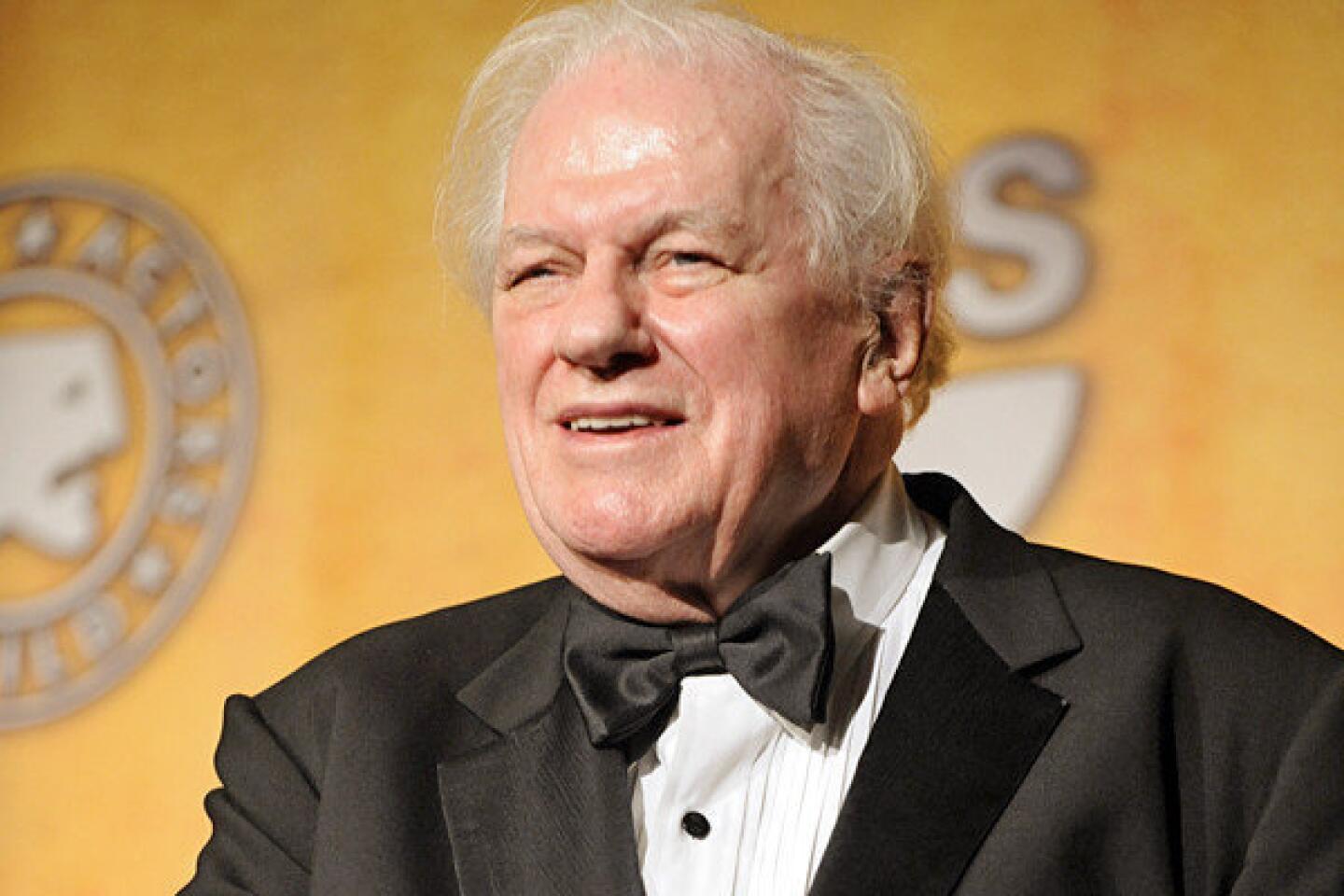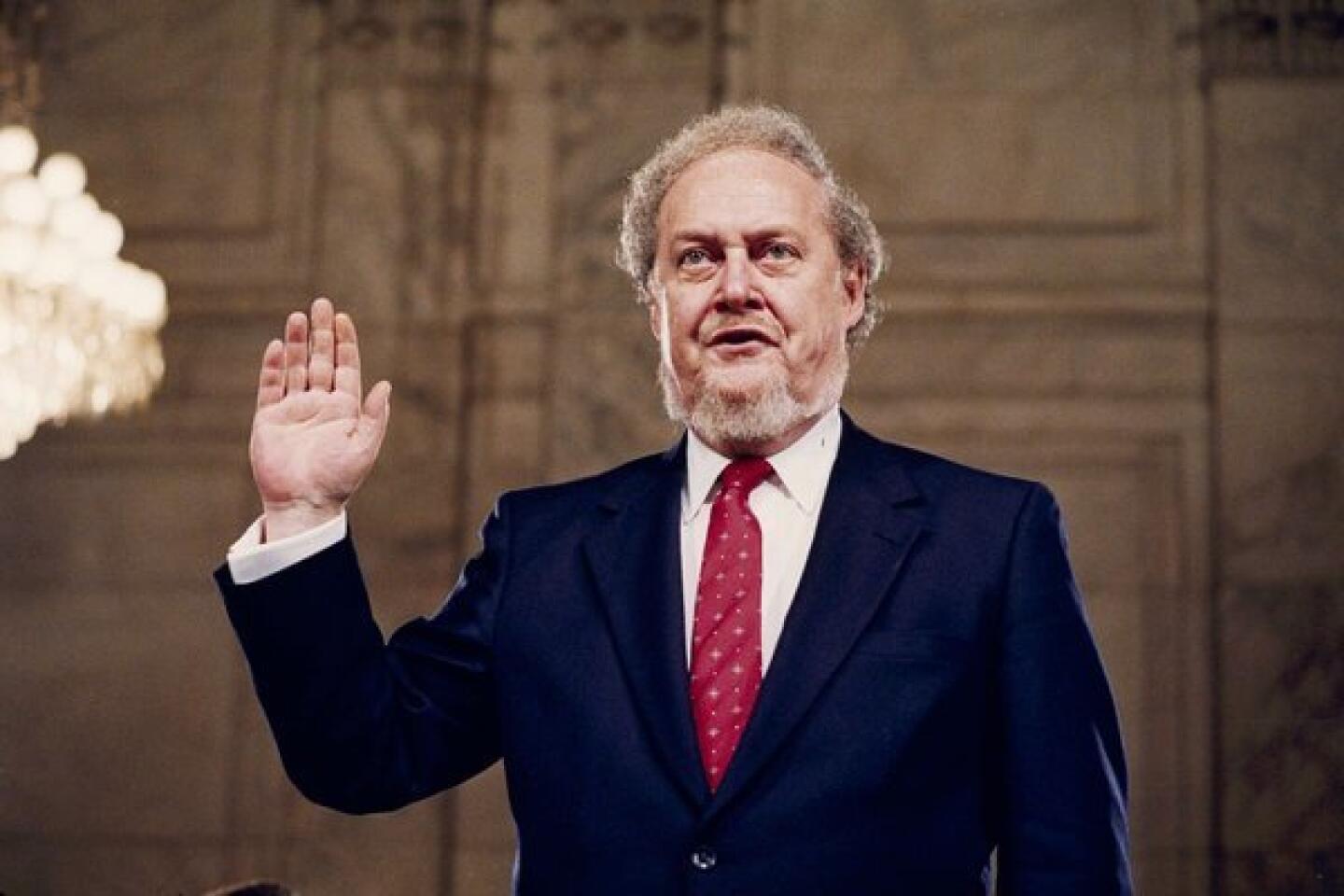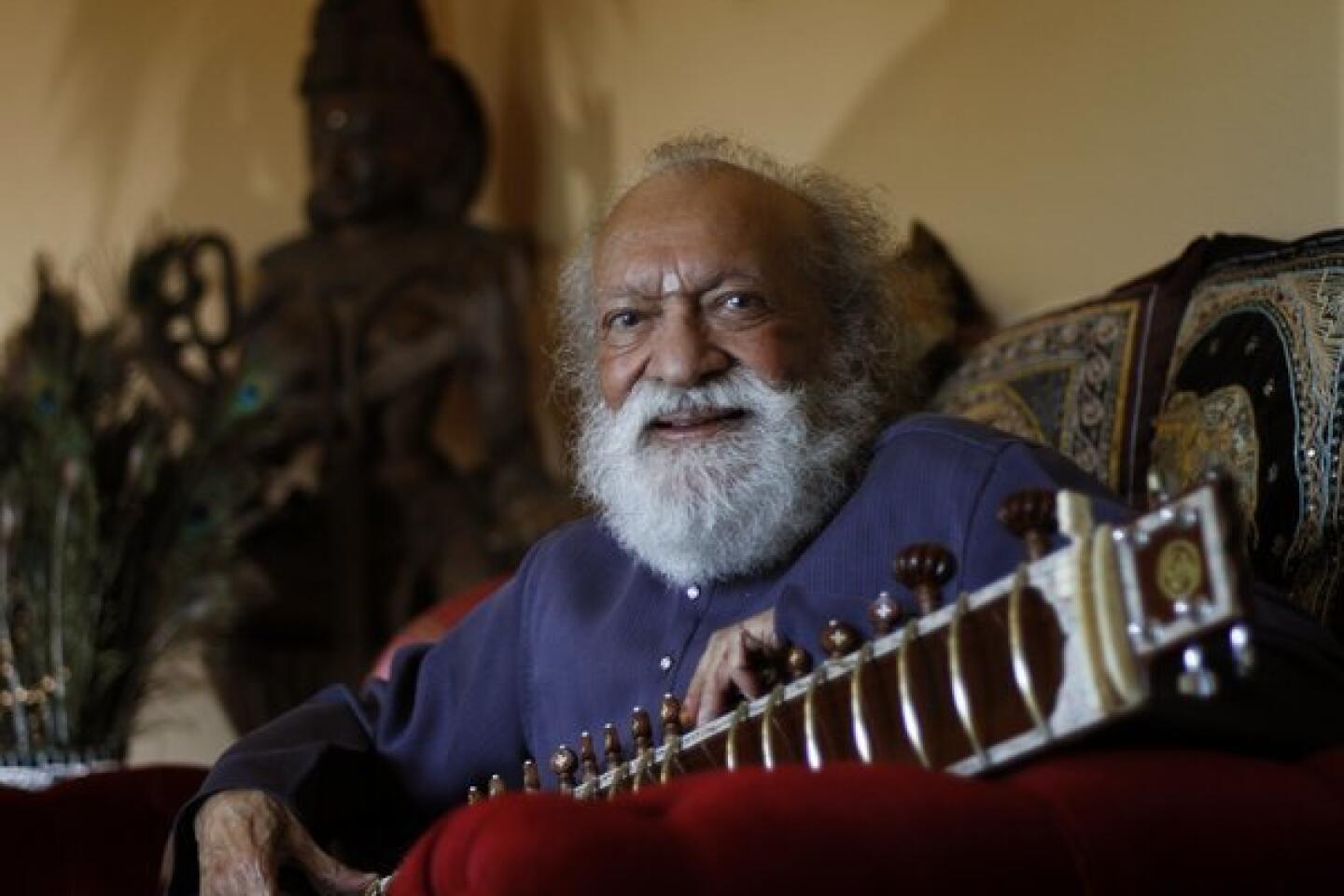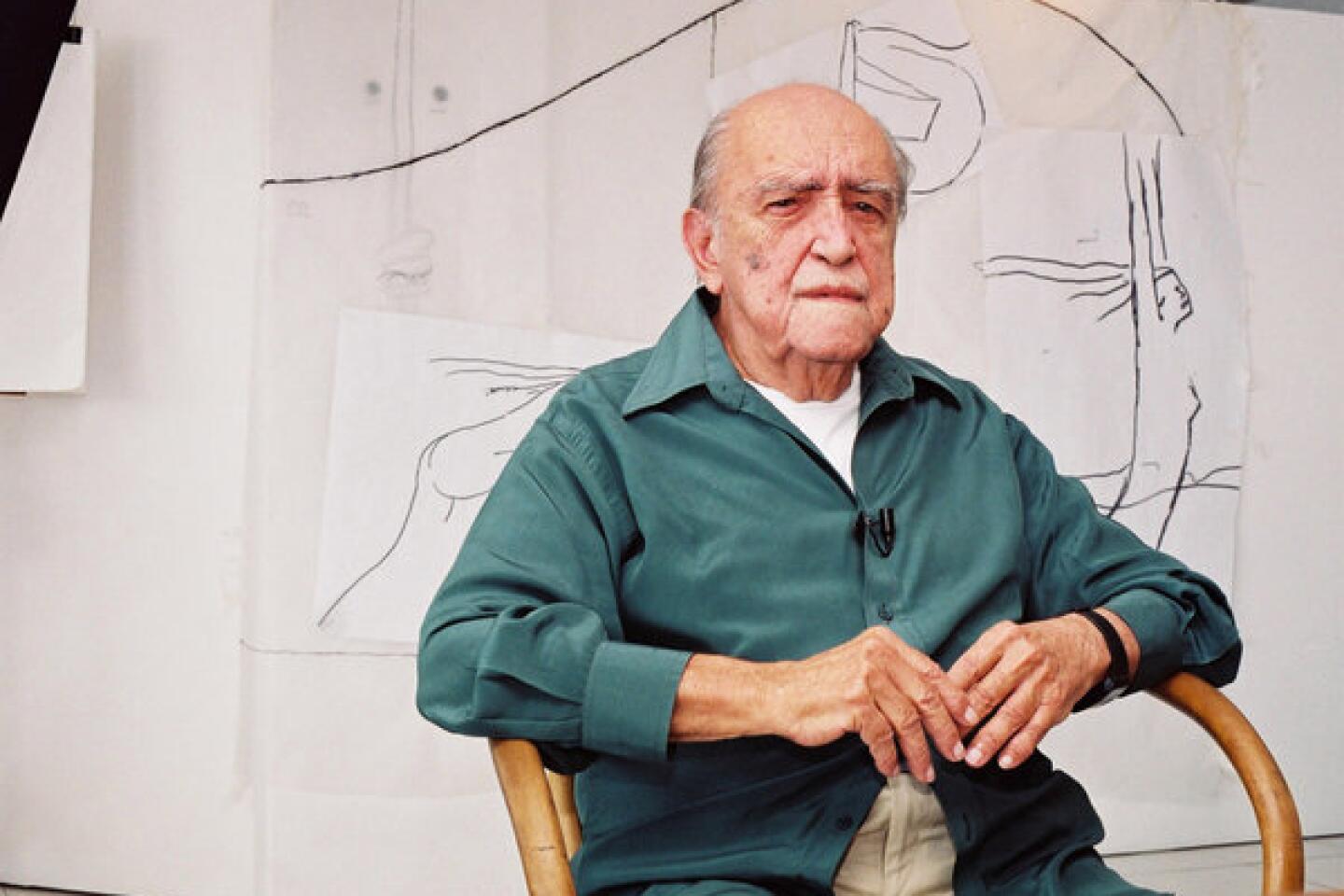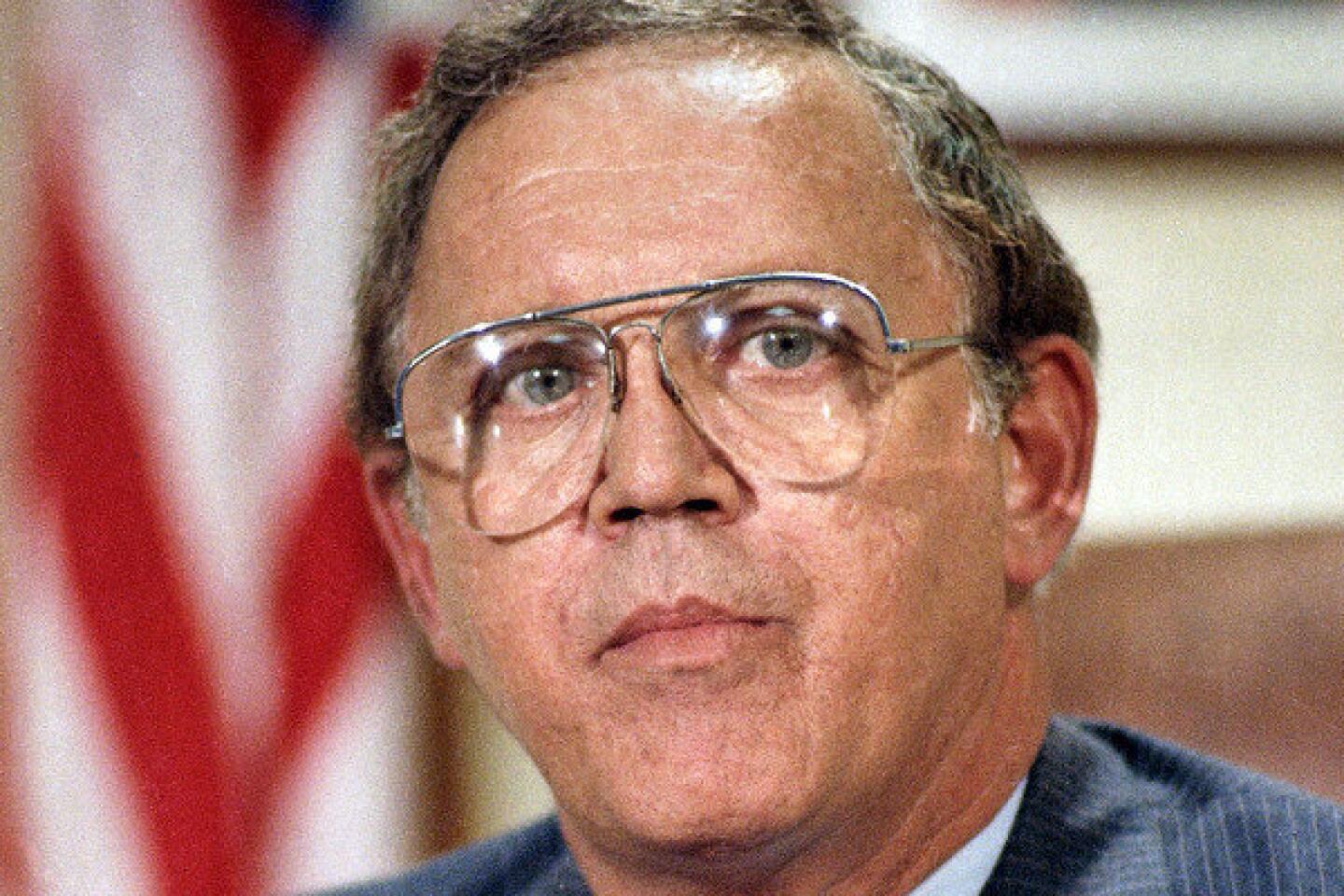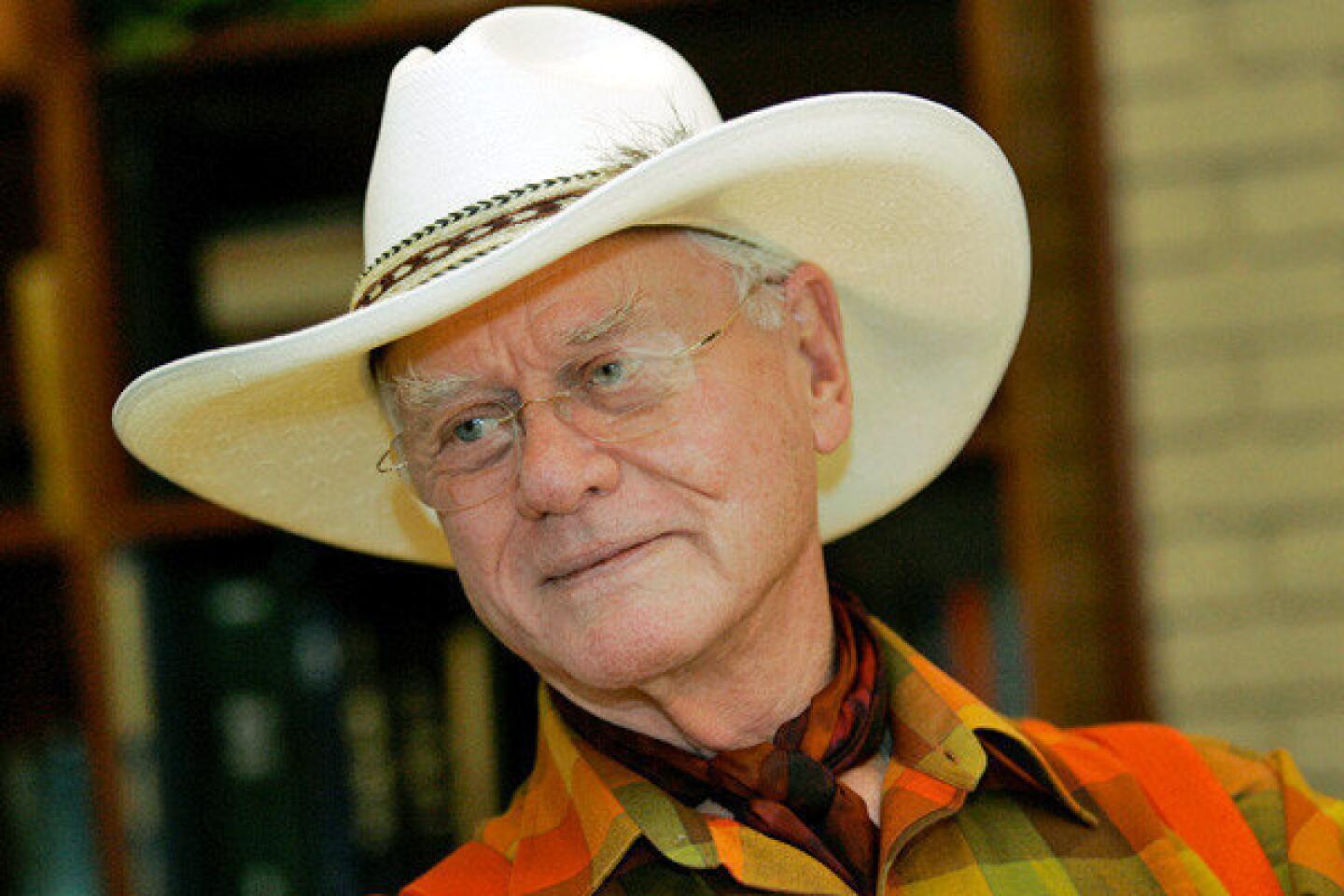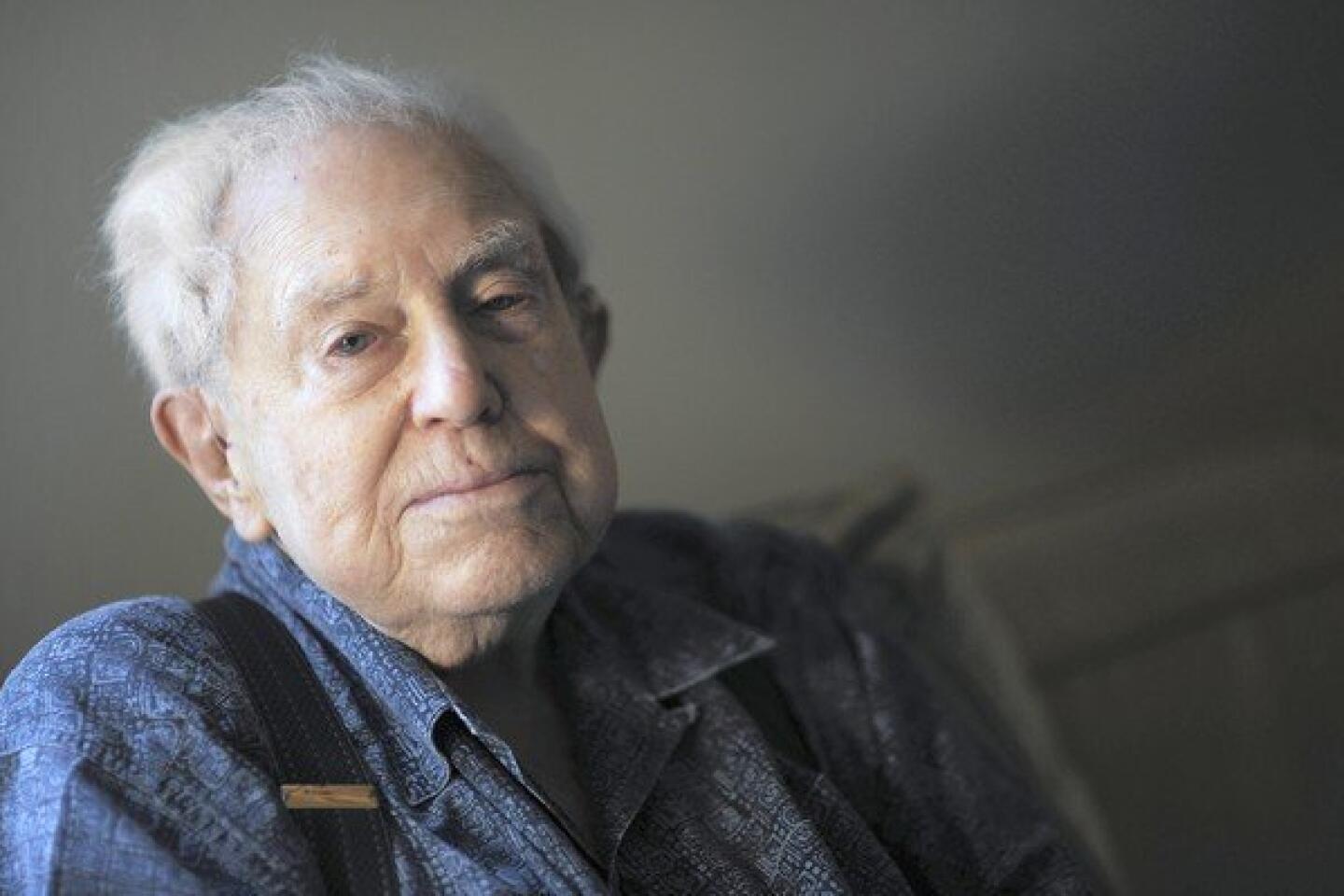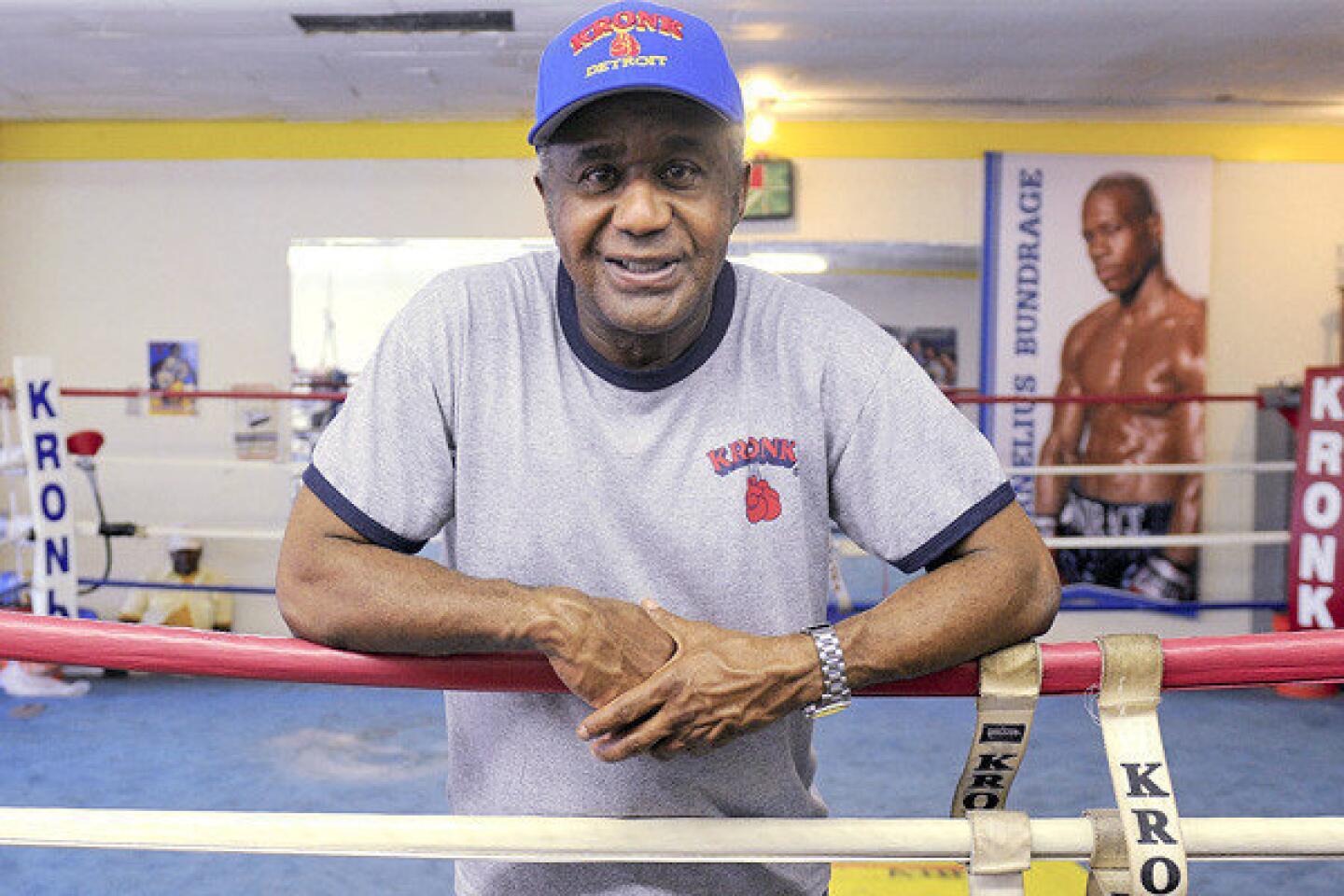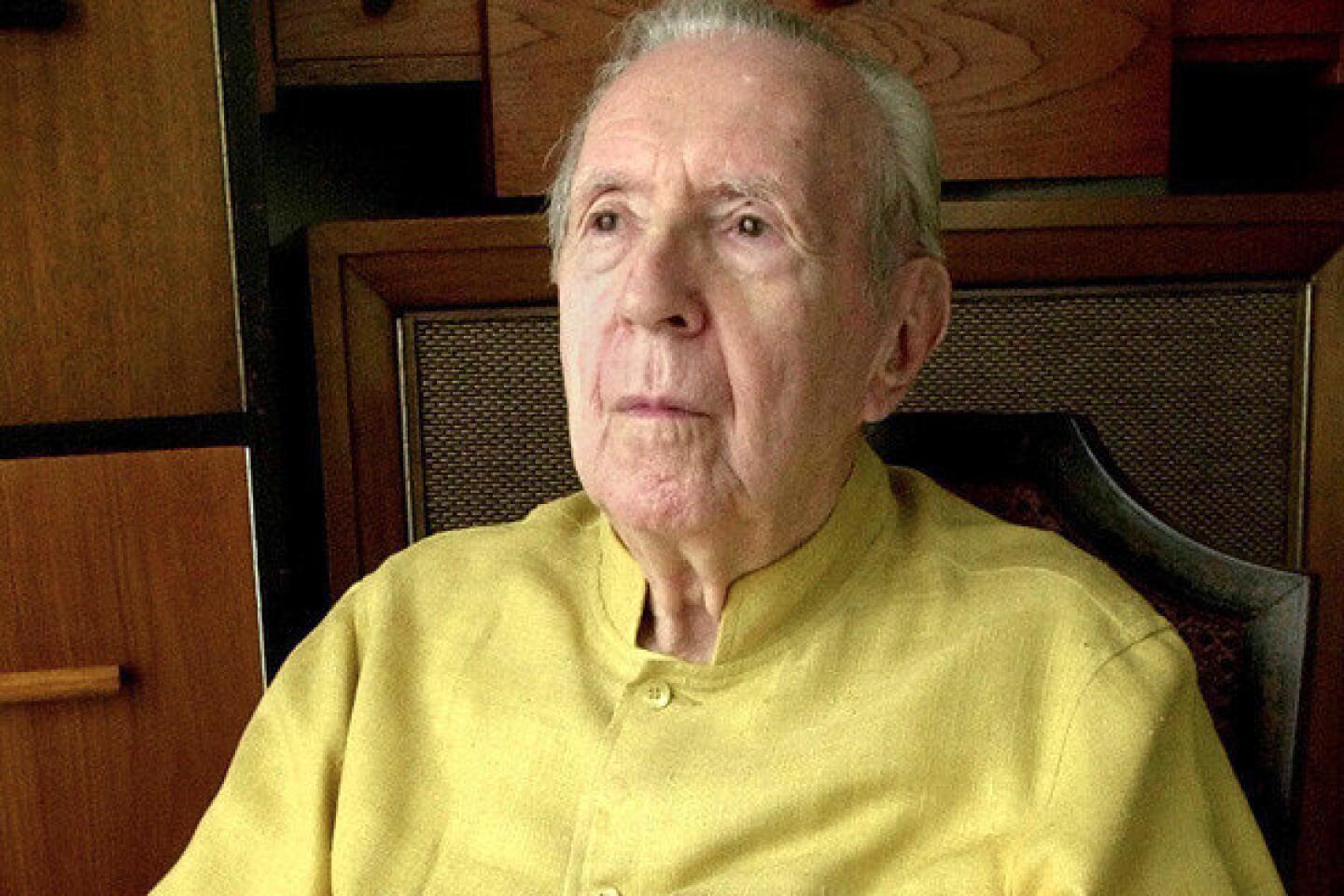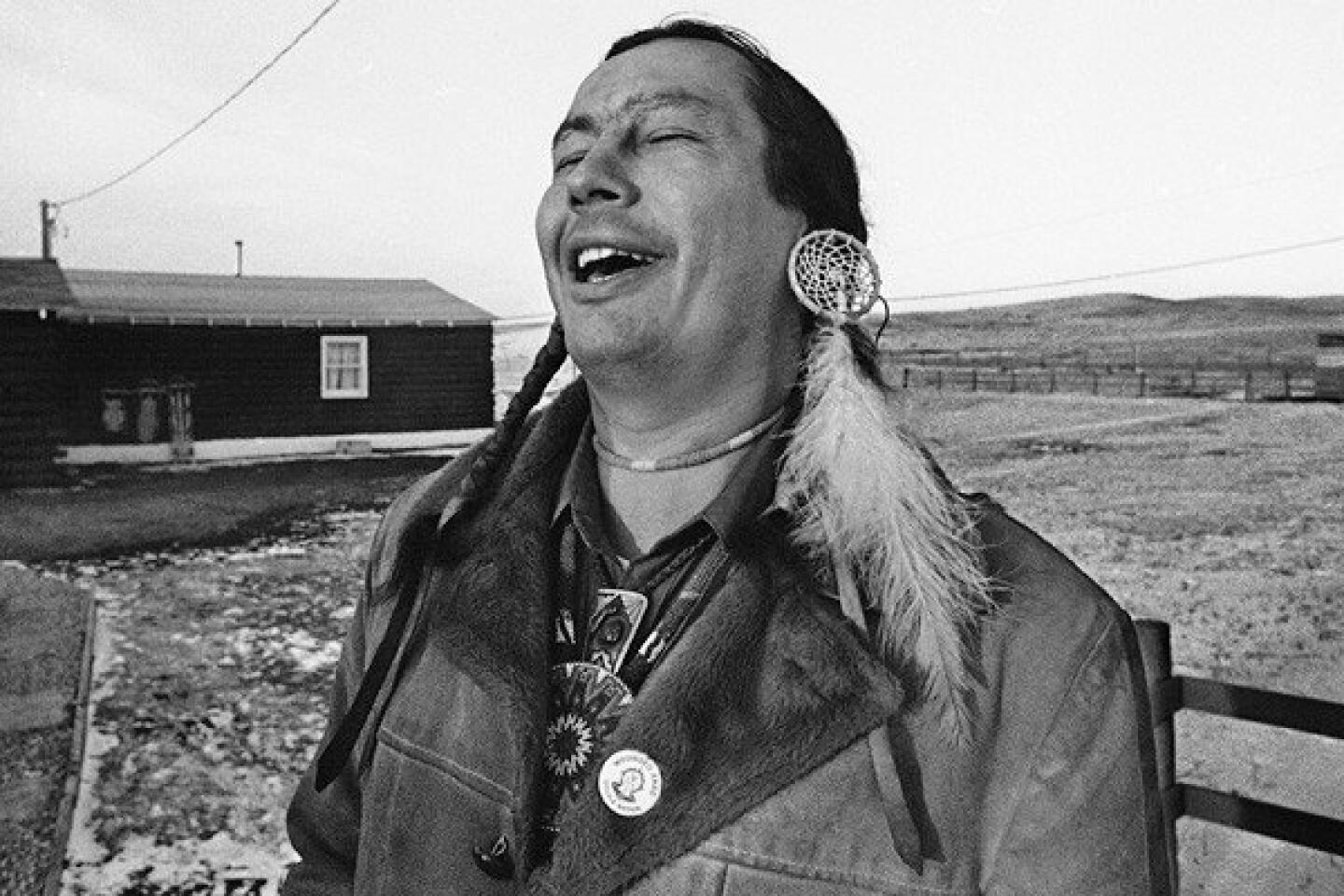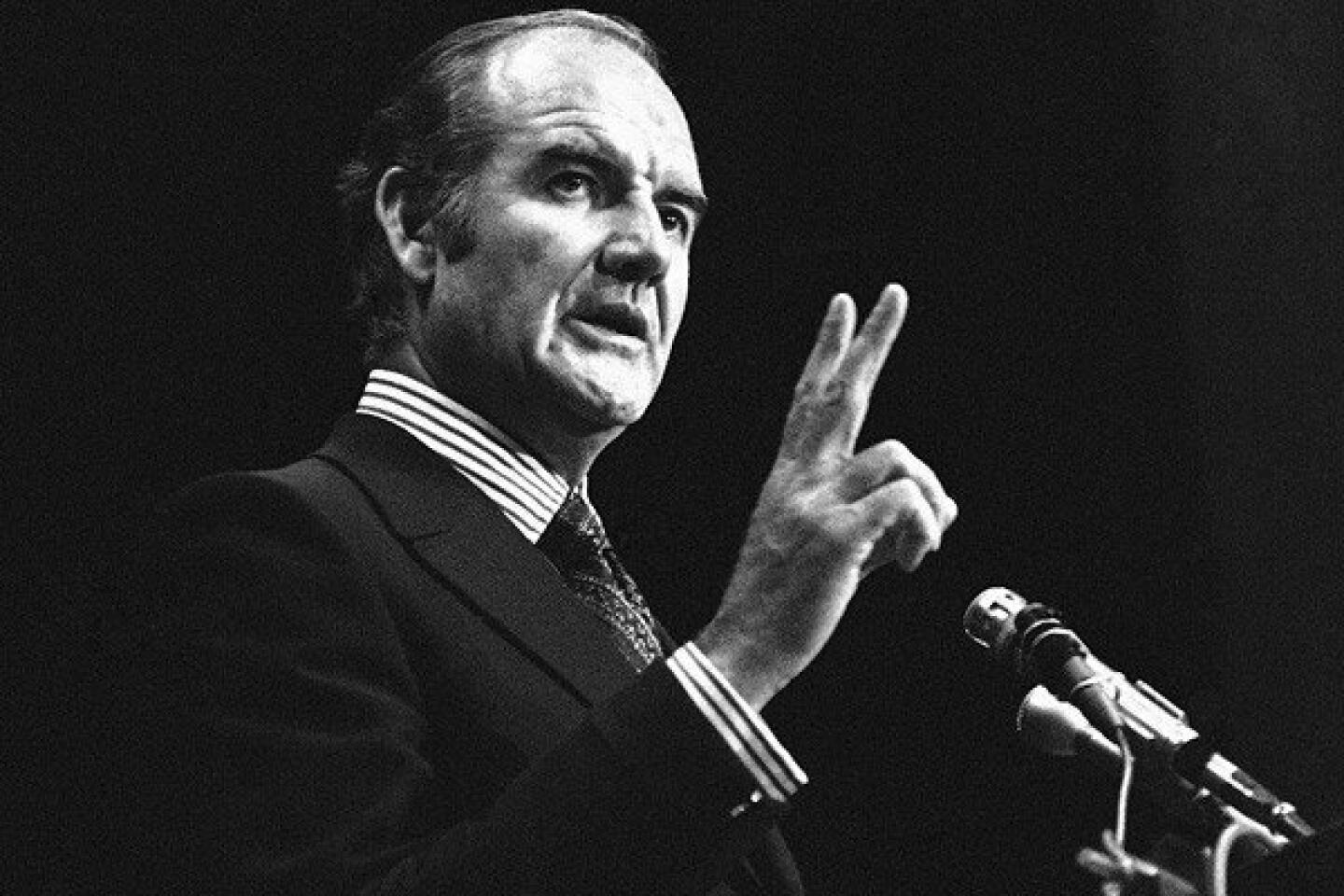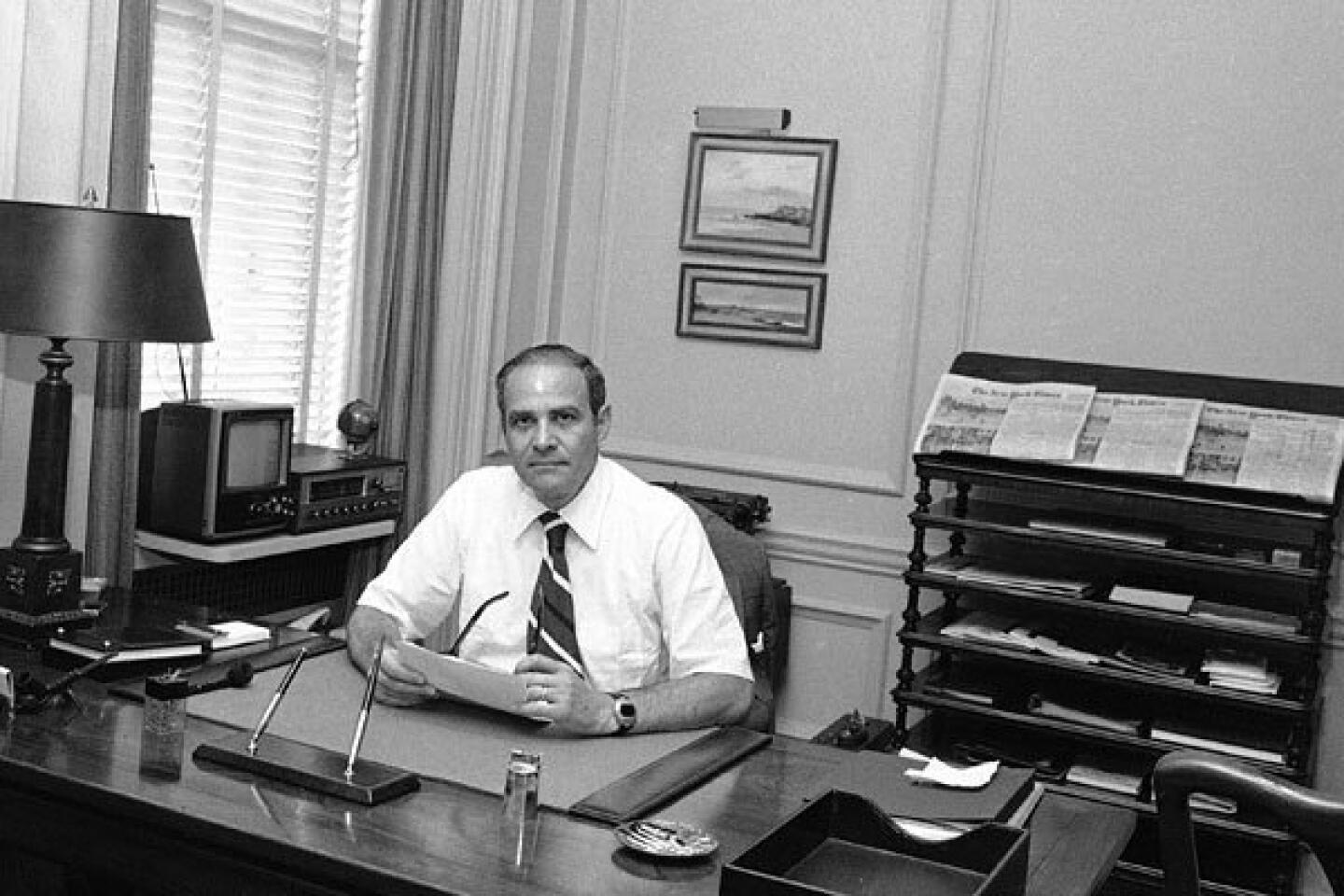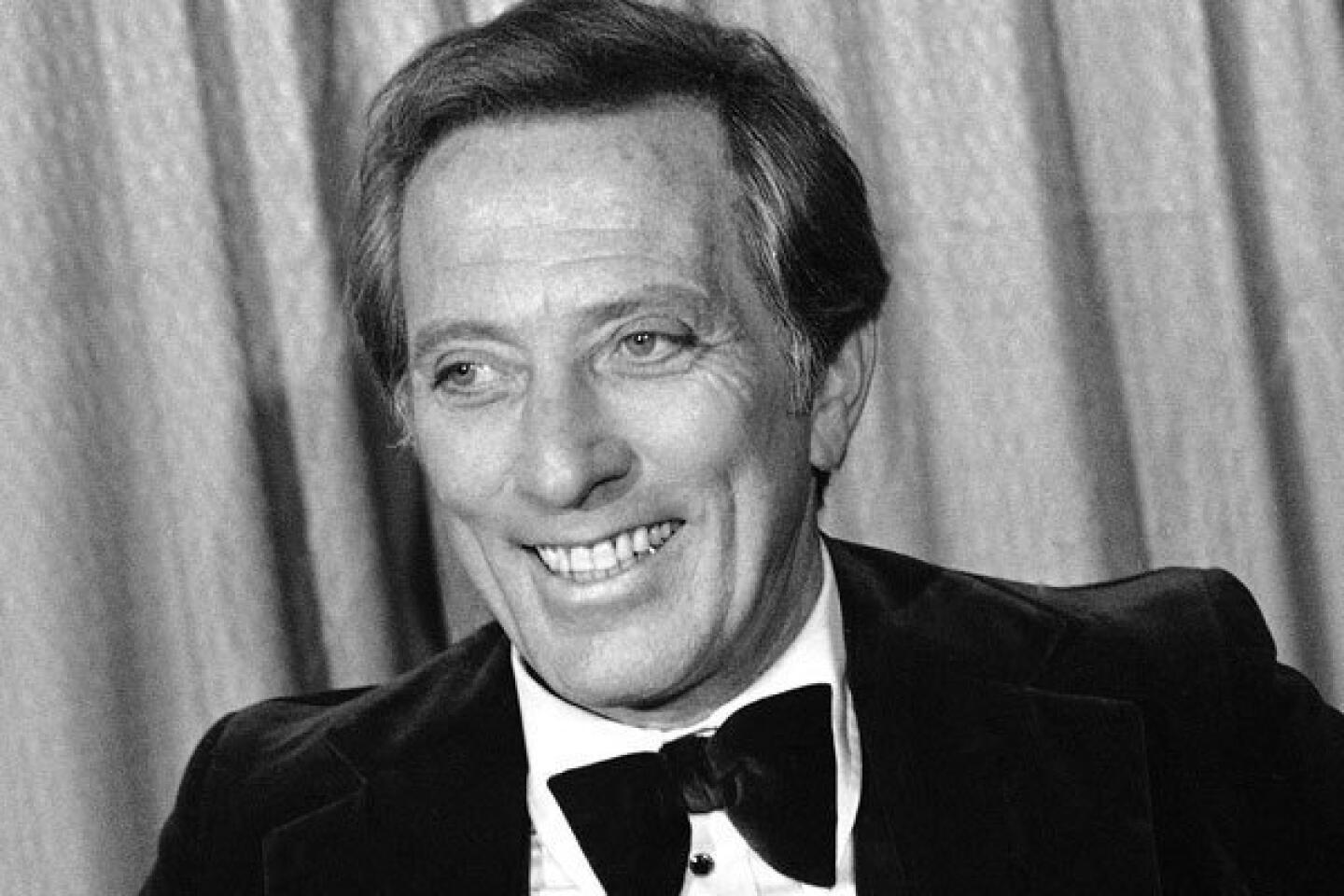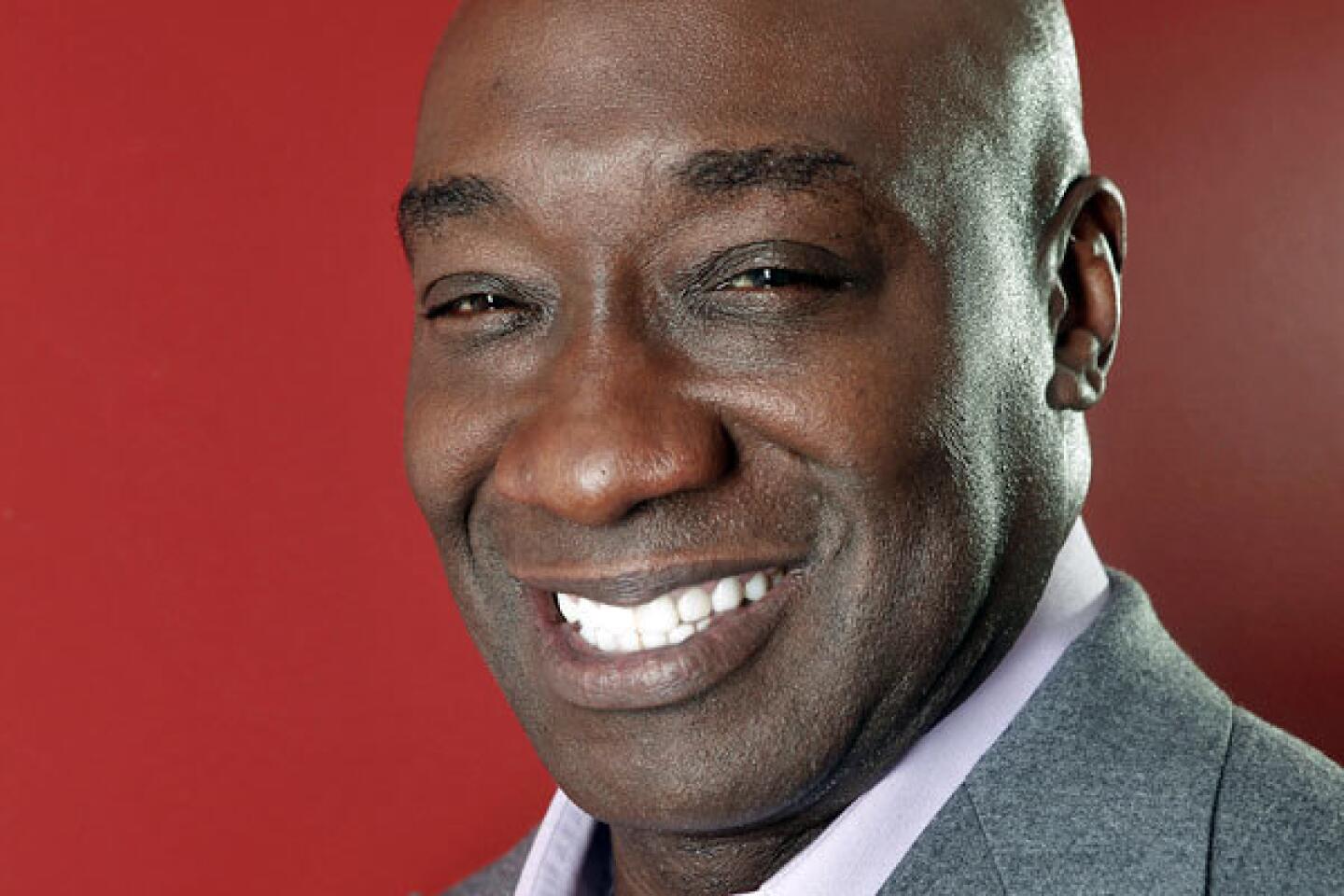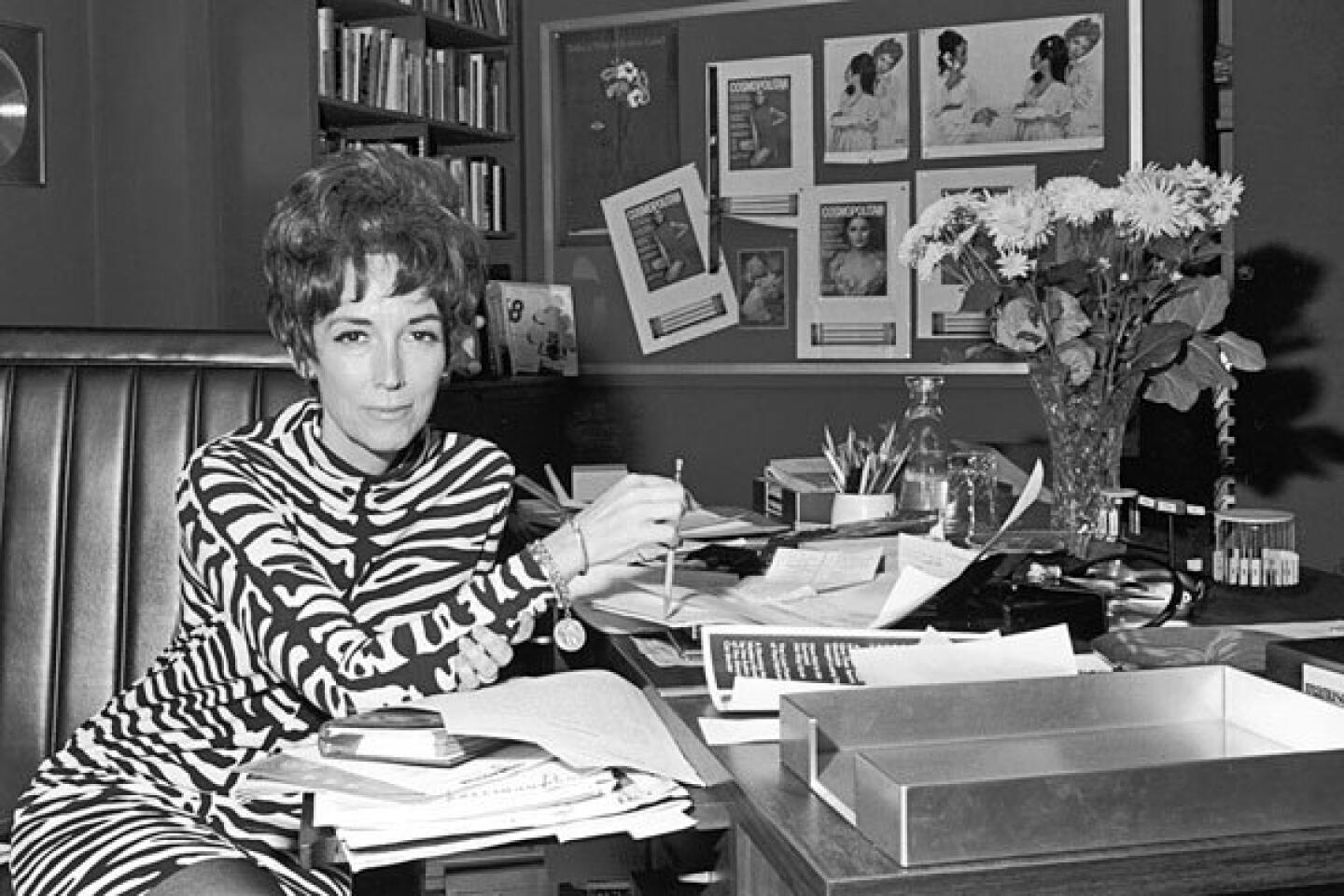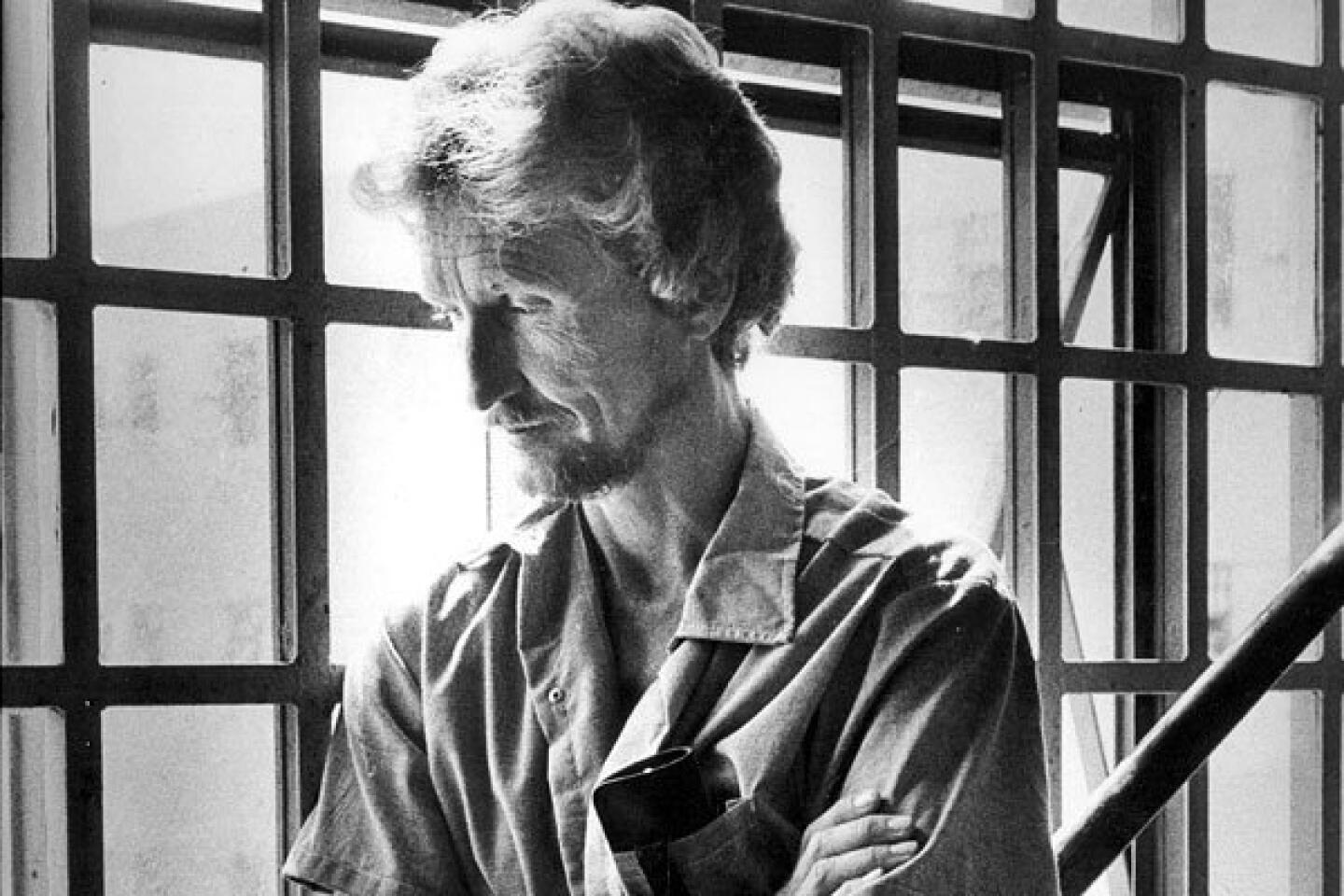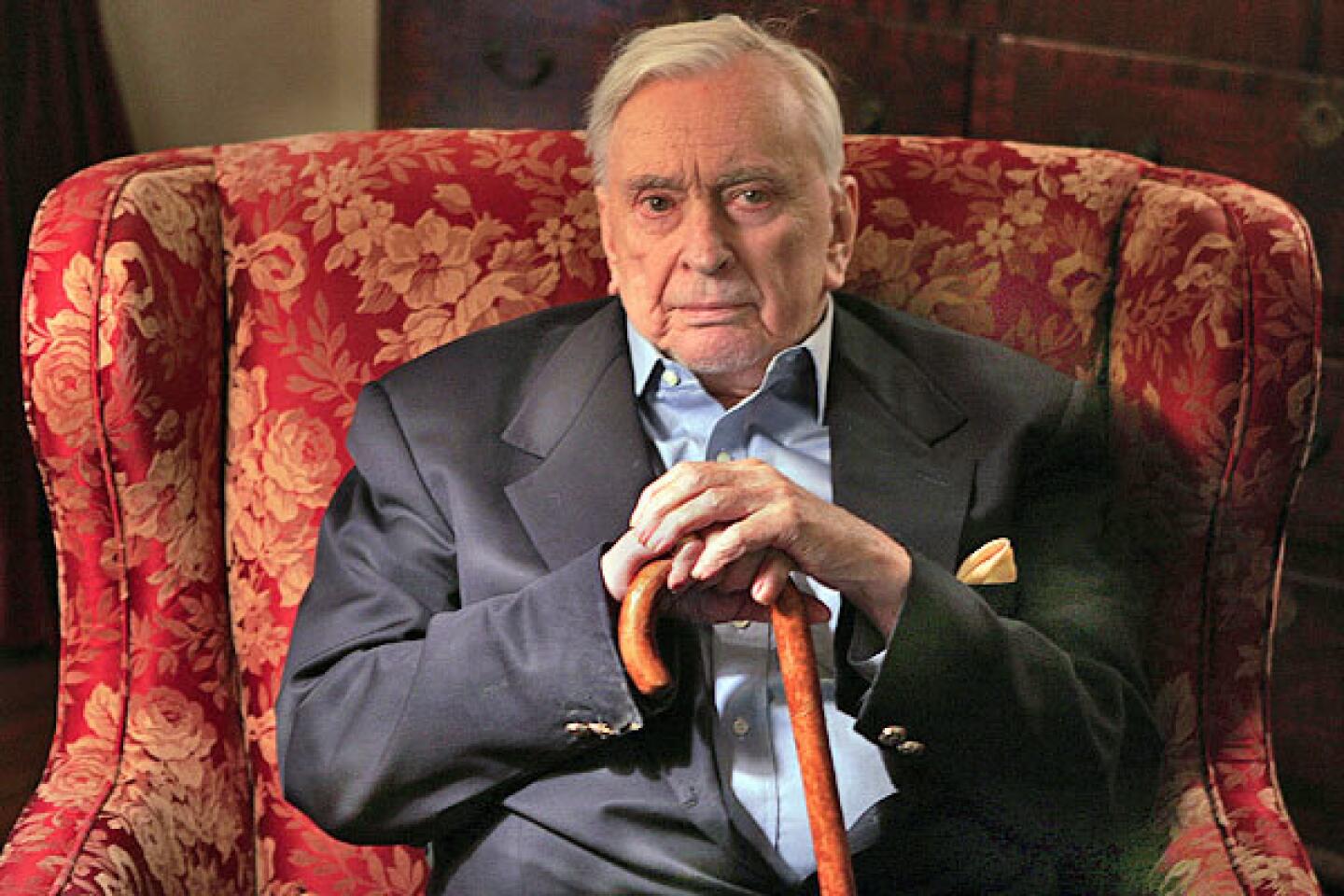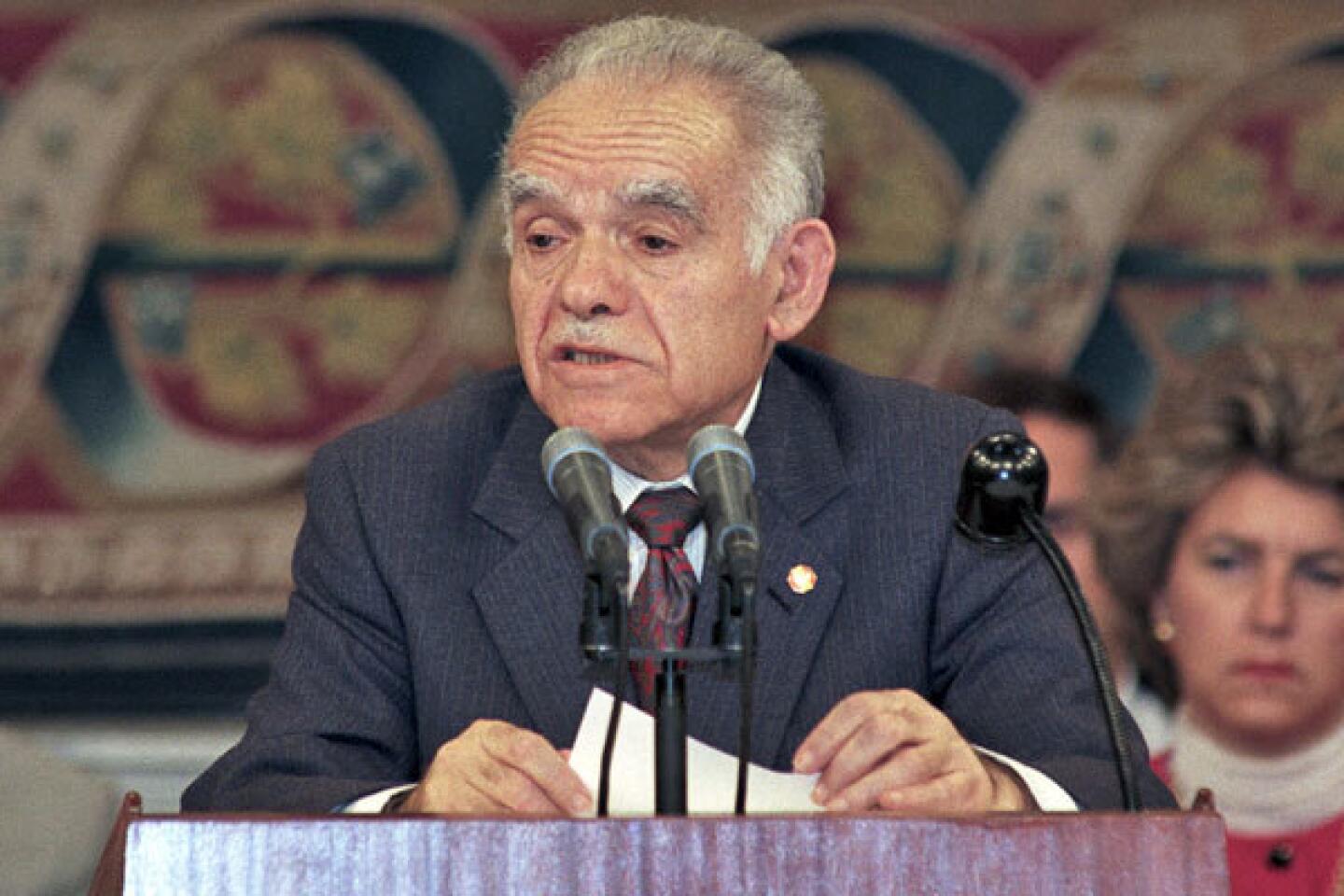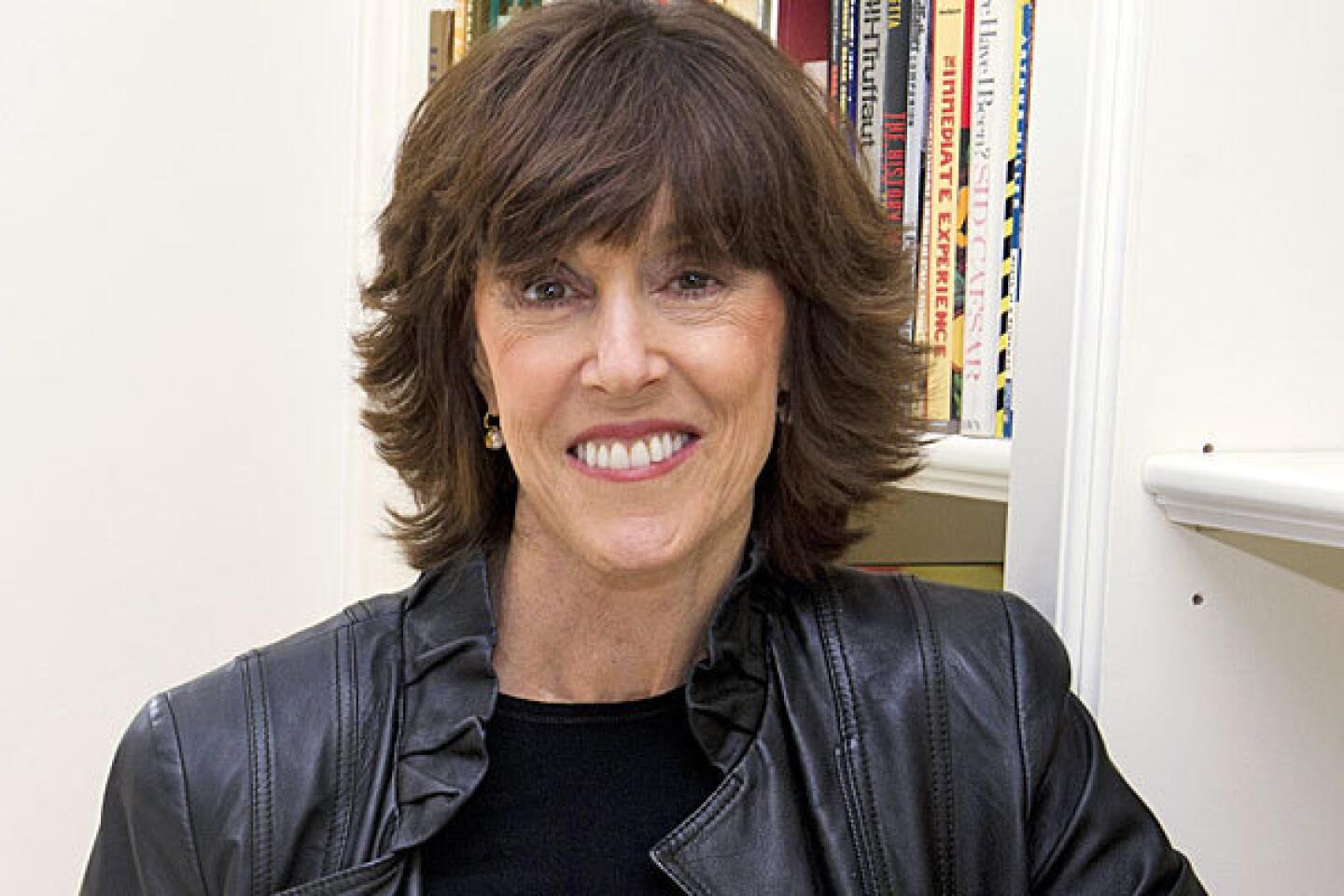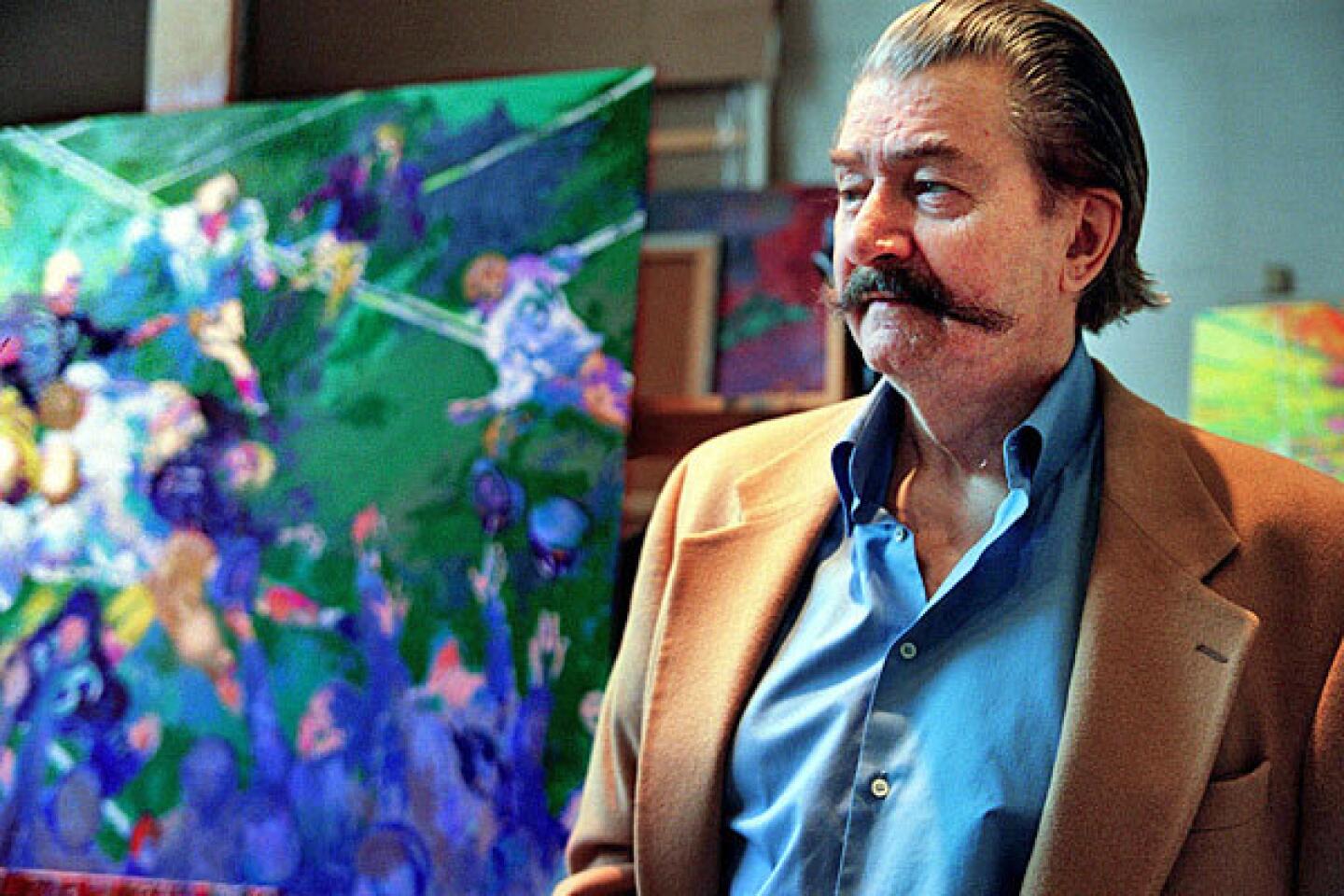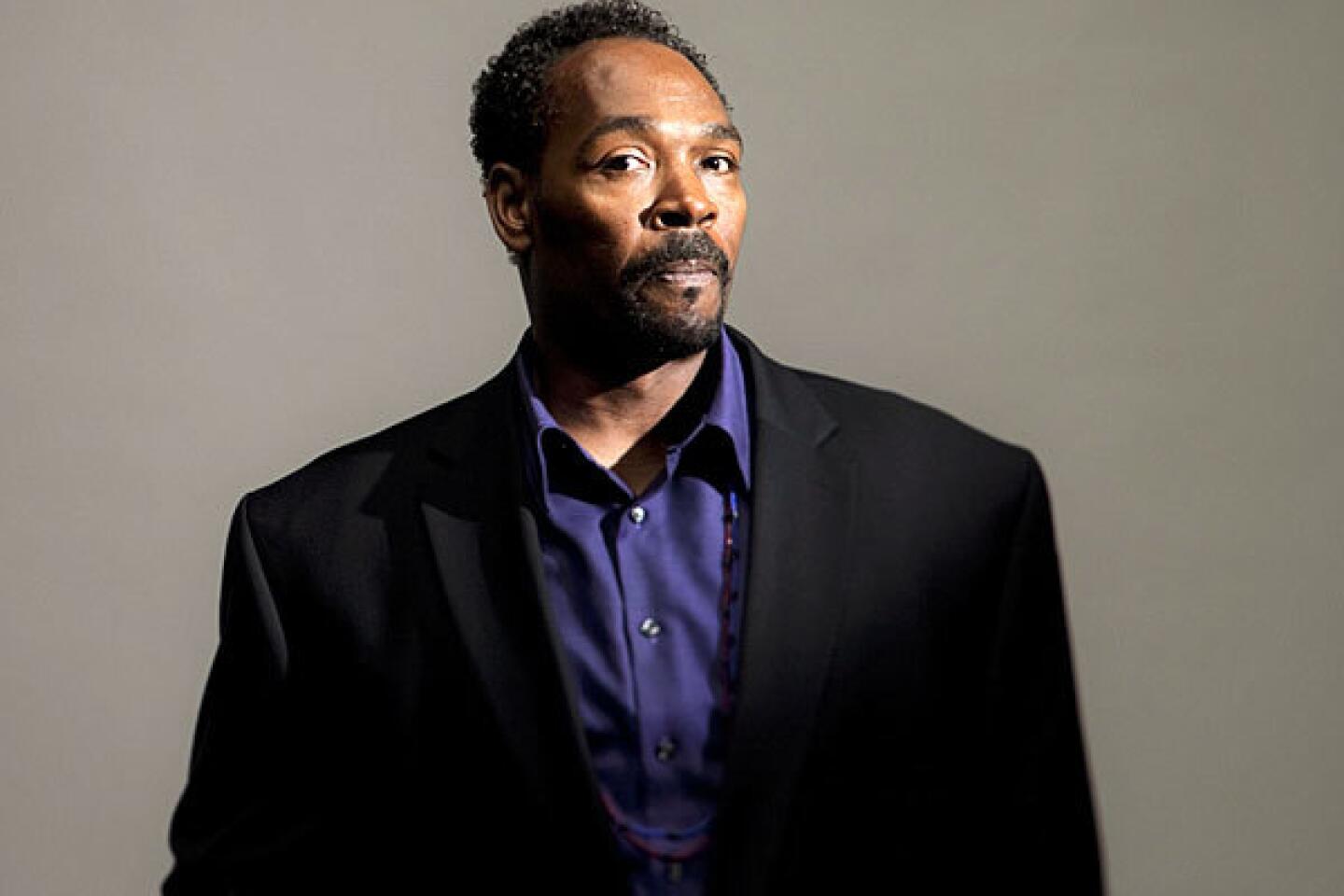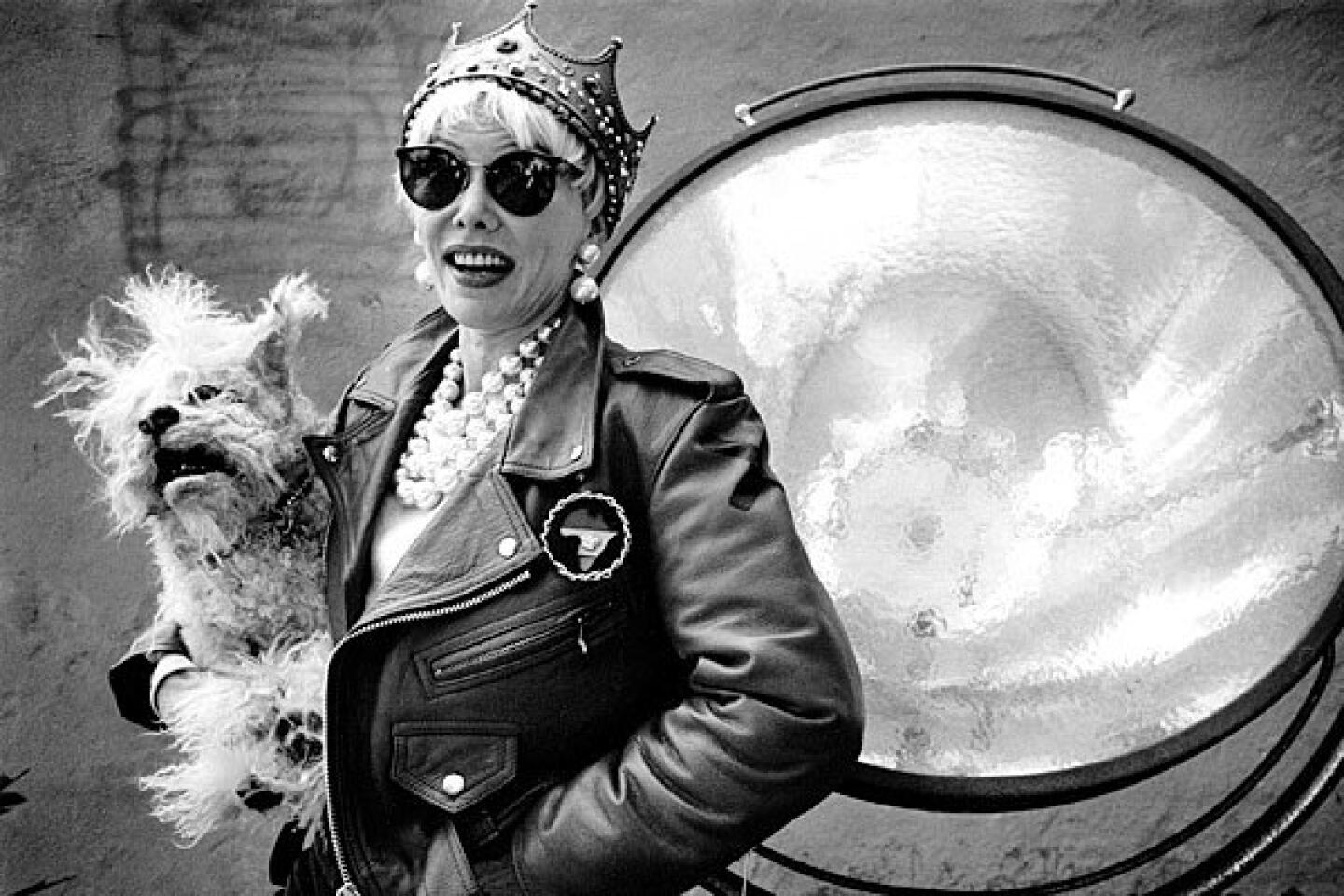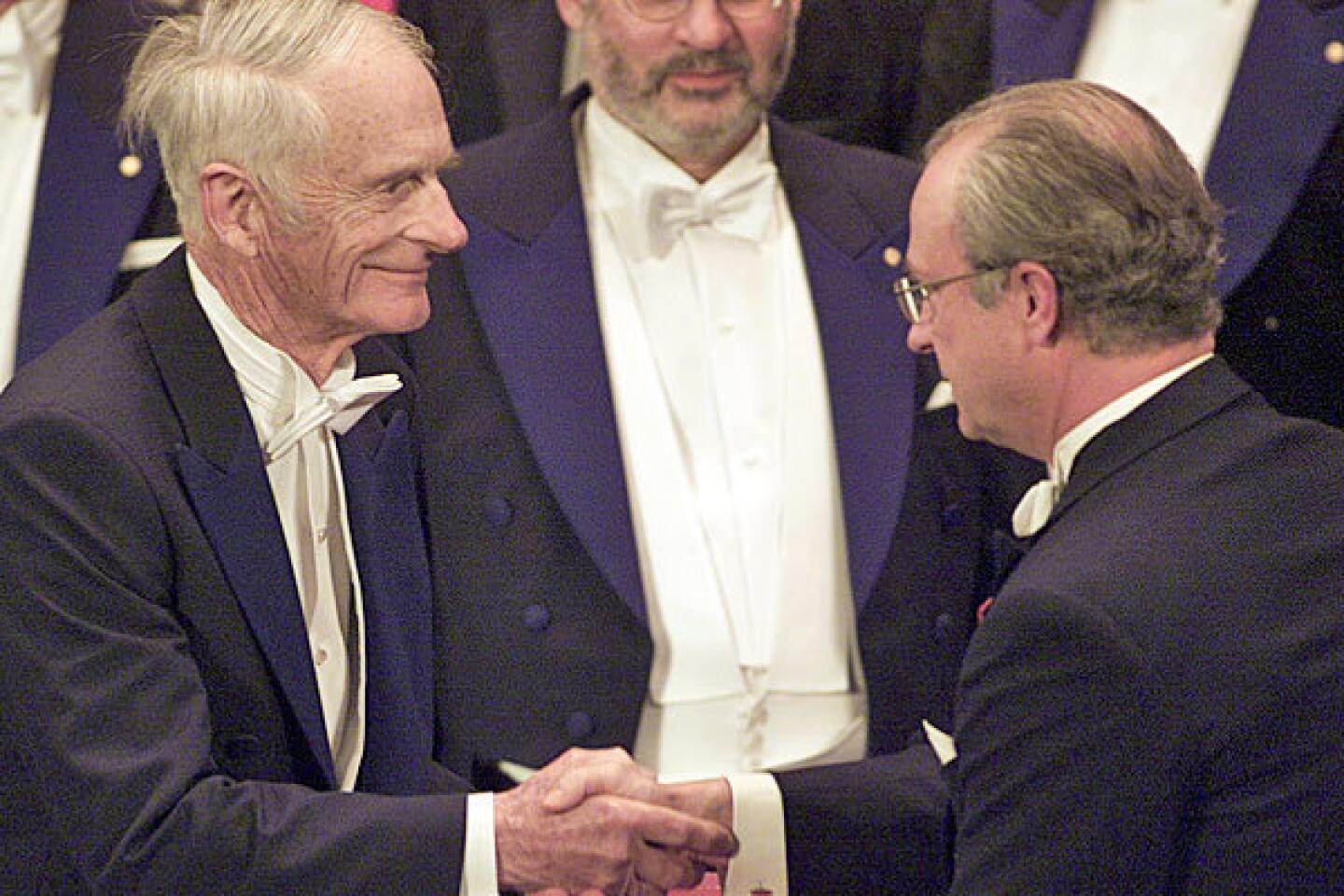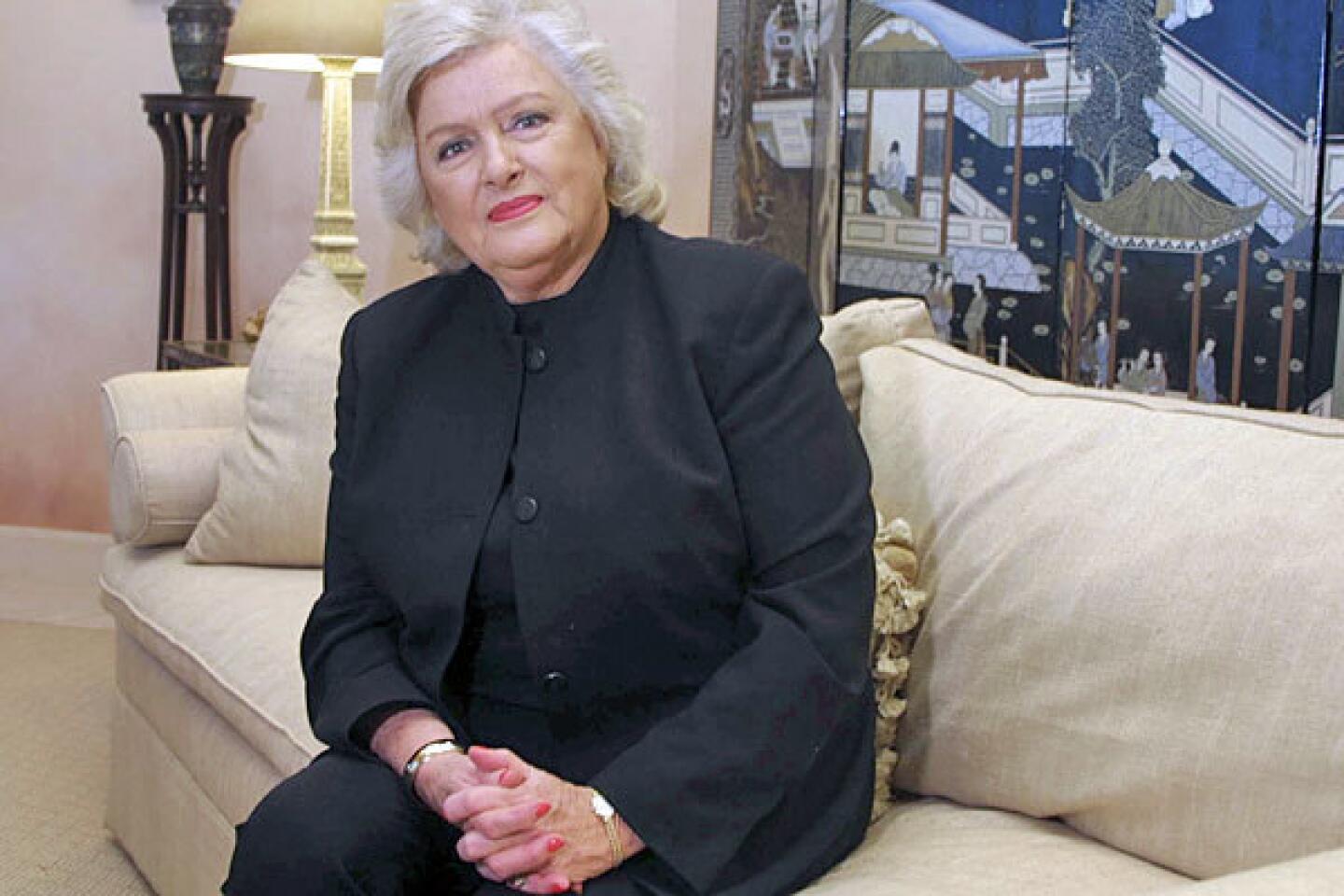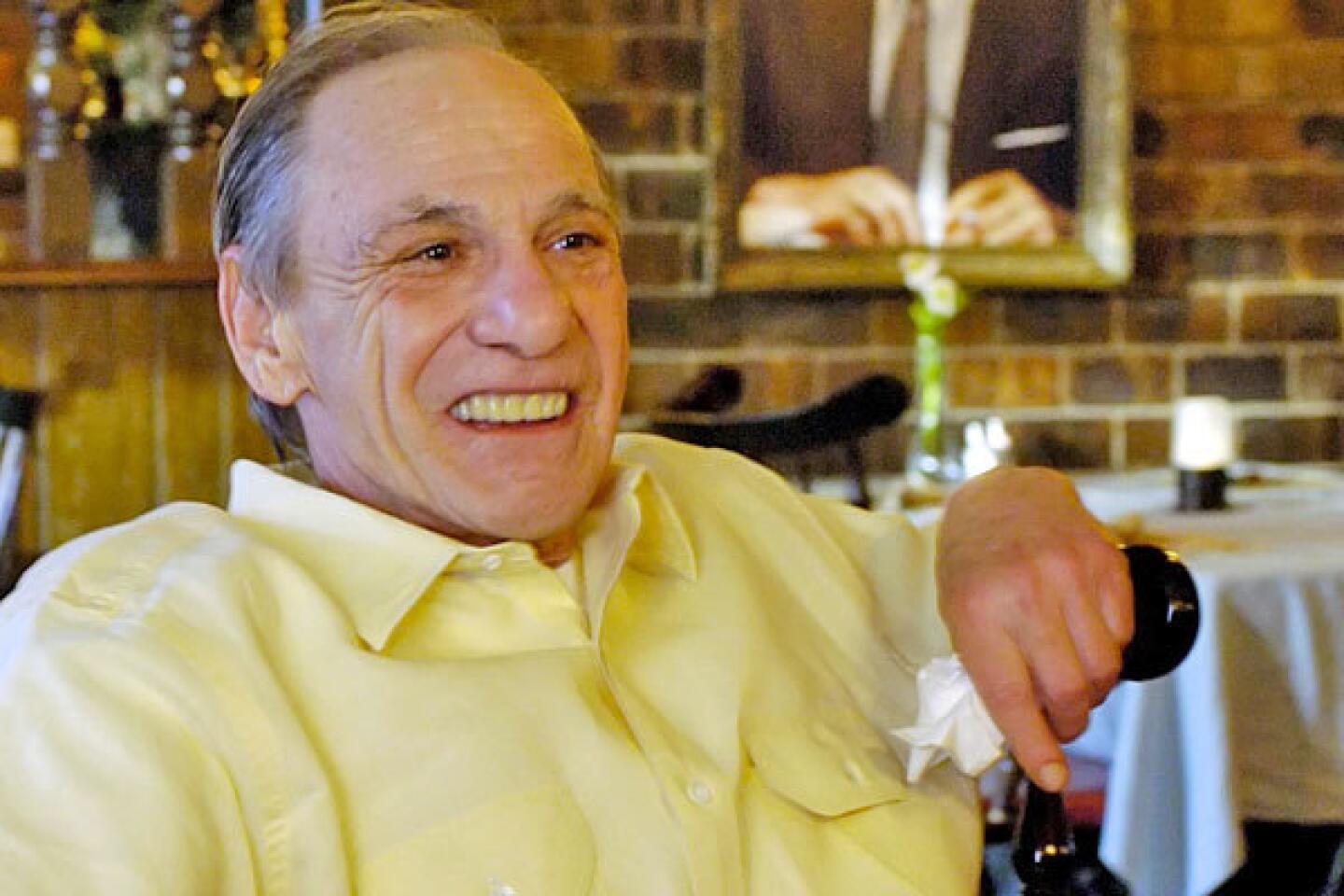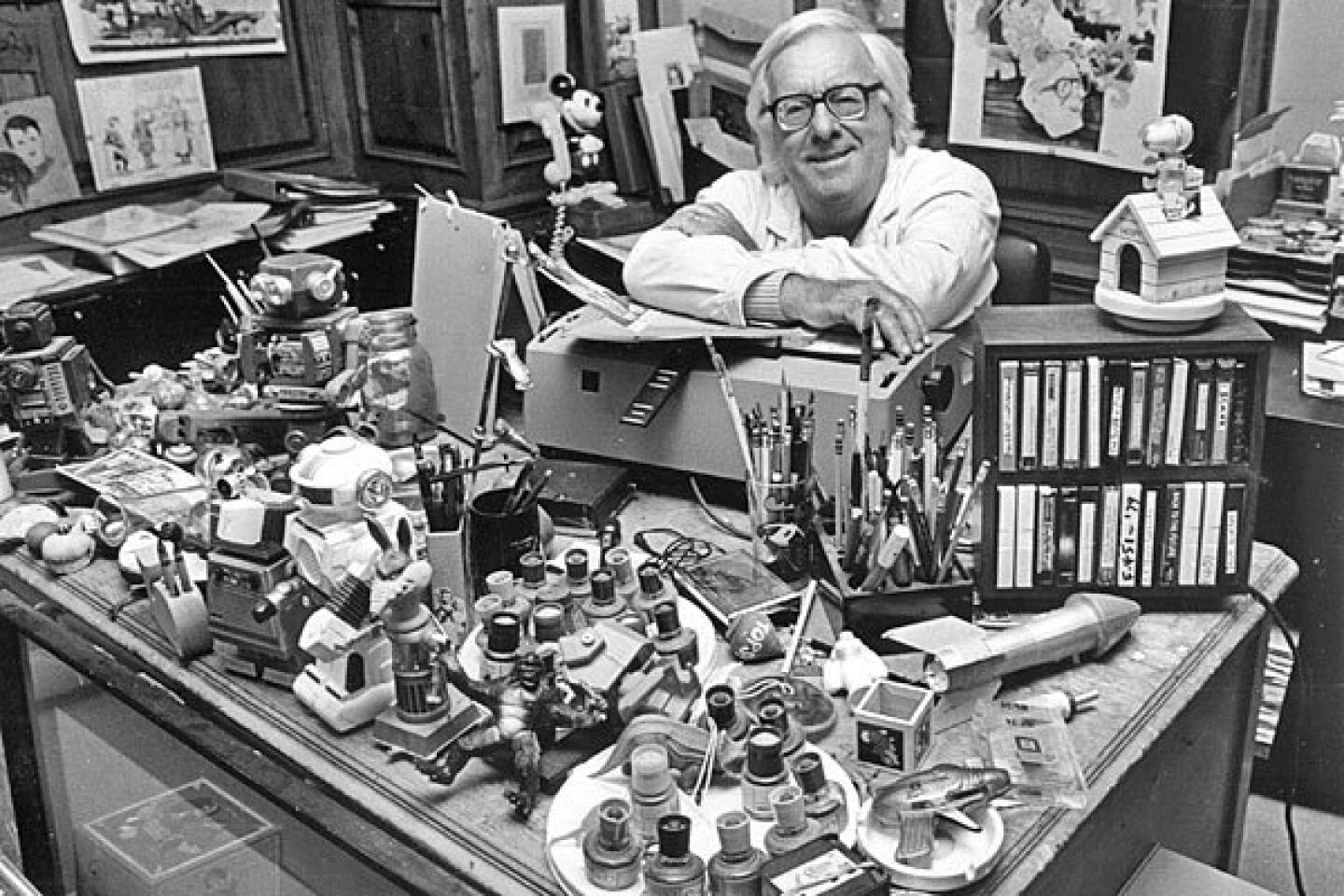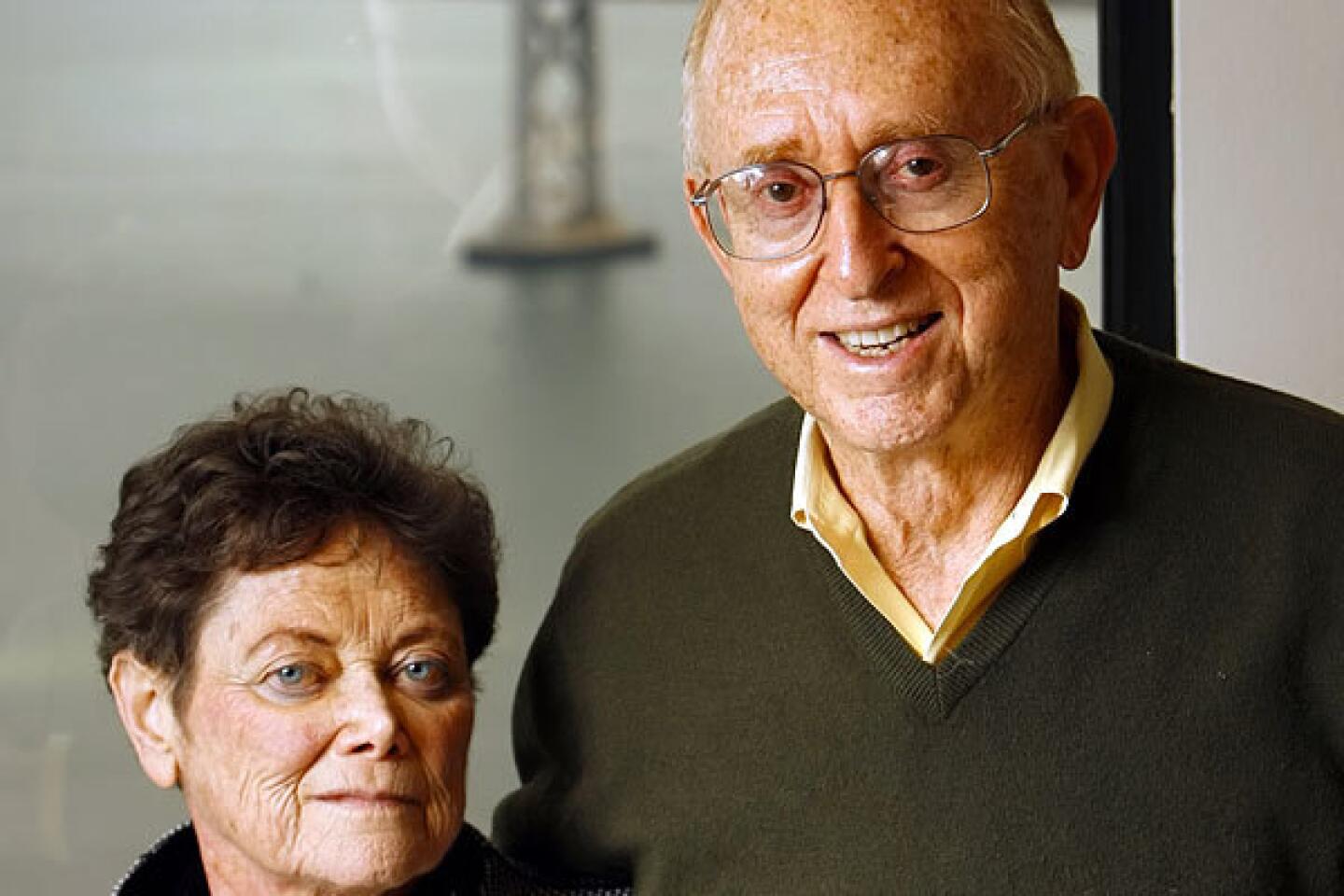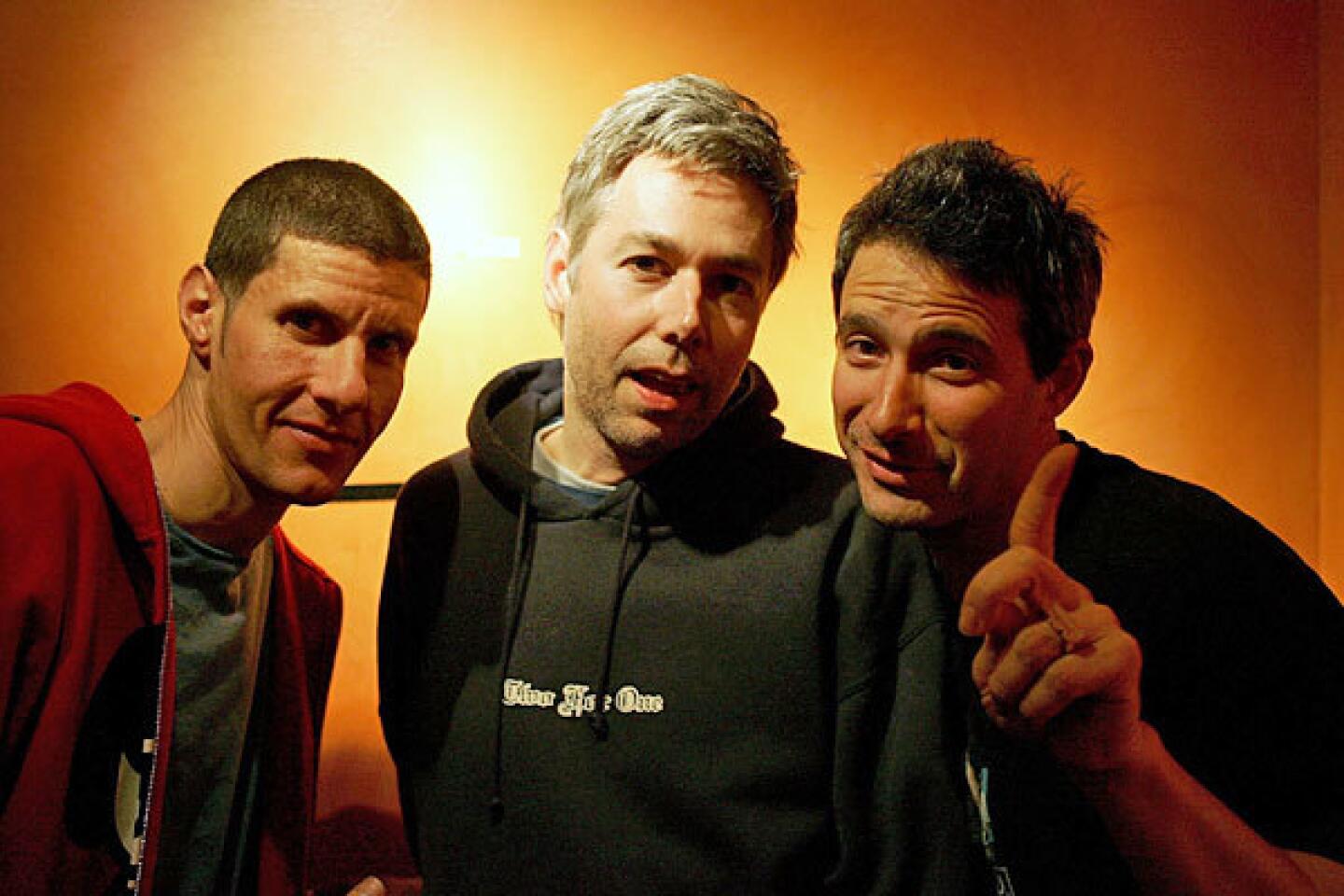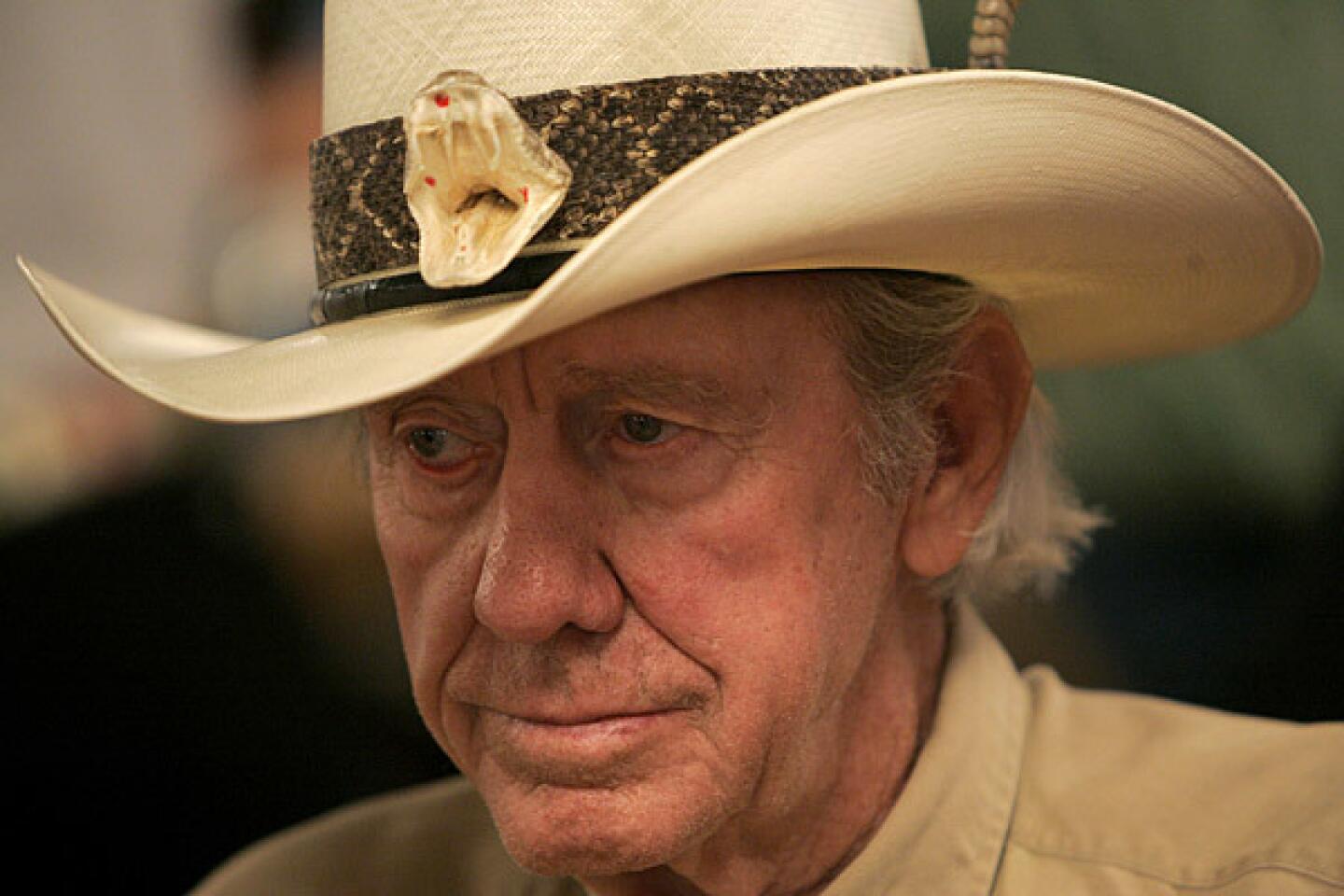Barry Commoner dies at 95; pillar of environmental movement
- Share via
Barry Commoner, a scientist-activist whose ability to identify and explain complex ecological crises and advocate radical solutions made him a pillar of the environmental movement, died of natural causes Sunday in New York City. He was 95.
His death was confirmed by his wife, Lisa Feiner.
Commoner was a biologist and author whose seminal 1971 book, “The Closing Circle: Man, Nature and Technology,” argued for the connectedness of humans and the natural world. It said environmental problems were related to technological advances and had a role in social and economic injustice.
He conducted research that helped propel a successful campaign for a nuclear test ban treaty in the early 1960s and drew early attention to the dangers of dioxins, the potential of solar energy and recycling as a practical means of reducing waste.
Historians of the environmental movement often name Commoner as one of the country’s most influential ecologists, along with scientist-author Aldo Leopold, “Silent Spring” author Rachel Carson and the Sierra Club’s John Muir and David Brower. Time magazine featured him in 1970 as the “Paul Revere of Ecology.”
“Together with Rachel Carson he was the most important person in catalyzing the modern environmental movement,” said Occidental College historian Peter Dreier, who named Commoner in his recent book “The 100 Greatest Americans of the 20th Century: A Social Justice Hall of Fame.”
“He was a bestselling writer, a scholar who understood how to translate science into everyday language. His analysis of the environmental crisis that was considered radical in the ‘60s, ‘70s, ‘80s is pretty much now taken for granted,” Dreier said Monday.
Dr. Steven Markowitz, Commoner’s successor as director of the Center for the Biology of Natural Systems at Queens College, praised the biologist’s ability as a “brilliant translator” of complex scientific concepts.
Commoner was particularly known for boiling down his philosophy to four simple principles: “Everything is connected to everything else. Everything must go somewhere. Nature knows best. There is no such thing as a free lunch,” he wrote in “The Closing Circle.”
Describing himself as “a visionary gadfly — I’m right but intransigent,” Commoner often took his arguments into the lion’s den, telling autoworkers that their industry put profits before public health and delivering a blistering critique of Environmental Protection Agency policies and practices before an audience of agency employees. He also relished challenging environmental orthodoxy, taking on leading figures such as population expert Paul Ehrlich in public debates.
In “The Closing Circle,” he argued there were three possible causes of environmental degradation — overpopulation, increasing affluence and technology. He decided technology was the No. 1 enemy, which put him in conflict with Ehrlich, author of the 1968 classic “The Population Bomb.”
A self-described “half-socialist,” Commoner called for stopping pollution before it is produced and cited the successful campaigns to ban the pesticide DDT and lead in gasoline. He said such changes could only be achieved by ending “the taboo against social intervention in the production system.”
These views did not make him a popular candidate for president when he ran on his own Citizens Party ticket in 1980. (He garnered less than 1% of the popular vote.) Nonetheless, he hit the campaign trail to bash corporate greed as the leading culprit in the degradation of the environment.
“Given the pioneering range and depth of his activities, Dr. Barry Commoner should be considered the greatest environmentalist of the 20th century,” activist Ralph Nader said Monday. “He was an environmental scientist. He was a networker of scientists against nuclear bomb testing and other issues. He was a community advocate. He was a bestselling author. And he was an organizer. He was really a Renaissance man.”
Born in New York City on May 28, 1917, Commoner was the son of a Russian Jewish tailor and seamstress. He ran with a street gang as a youth but discovered a passion for biology in high school.
He worked odd jobs to put himself through Columbia University, where he graduated with honors in zoology in 1937. He earned a doctorate in biology from Harvard in 1941.
He learned one of his most valuable lessons outside the classroom, however. While serving in the Navy during World War II, he was assigned to spray a naval facility on the Jersey shore with DDT to rid it of mosquitoes. To his dismay, the mosquito population ballooned and the fish that normally ate them died. He would recall the experience in later years when he reflected on the development of his ideas about the worlds of men and nature sharing one ecosystem.
In 1953, after completing his military service and a brief stint working for Science Illustrated, Commoner began teaching at Washington University in St. Louis, distinguishing himself with research on viruses, genetics and free radicals, or unpaired electrons. He was part of a team that discovered that abnormal free radicals may be the earliest sign of cancer in laboratory rats.
In the mid-1950s, alarmed by the proliferation of nuclear tests, he helped organize scientists as the Committee for Nuclear Information. Later called the Committee on Environmental Information, it conducted a nationwide study that found levels of strontium-90 in babies’ teeth. The alarming findings were a crucial factor in President Kennedy’s support of the 1963 nuclear test ban treaty.
That work led Commoner to develop his ideas about the effect of technology on the environment. He began to examine an array of environmental problems, including sewage, pesticides, auto pollution and atomic power plants. In 1966 he founded the Center for the Biology of Natural Systems at Washington University in St. Louis, the first environmental research center of its kind in the U.S. He moved the center to Queens College in 1981.
He stepped down as director in 2000, when he was 82, but continued to work on research projects. In his last years he was writing an ambitious book on the origins of life and was nearly finished with it before he died, according to Markowitz.
Commoner was headstrong but humorous. When Nader called to wish him a happy 90th birthday in 2007, Commoner replied, “It happens.” He did not have much of a materialistic impulse, needing little to get by besides “some work shirts, some chino pants and a fountain pen,” said Feiner, his wife of three decades.
As he advanced in years, his one indulgence was taking cabs to work. He found mass transit from his home in Brooklyn to Manhattan too cumbersome and time-consuming. His wife also acknowledged that she handled most of the recycling in their household.
“I think he would say that the solution to our major problems is not going to be found through each individual behaving a certain way,” she said. “He believed the solutions were political and economic.”
In addition to his wife, Commoner is survived by two children from his first marriage to Gloria Gordon, Lucy Alison Commoner of New York City and Fredric, of Boston; and a granddaughter.
More to Read
Start your day right
Sign up for Essential California for the L.A. Times biggest news, features and recommendations in your inbox six days a week.
You may occasionally receive promotional content from the Los Angeles Times.


